Pearlware, Polish, and Privilege: Art by Paul Scott
Paul Scott, Cumbrian Blue(s) New American Scenery, Angola 3, No. 2, 2019. In-glaze screen print (decal) on salvaged Syracuse China with pearlware glaze. Courtesy of Ferrin Contemporary.
ABOUT THE EXHIBITION:
Paul Scott transforms factory-made tableware with subversive imagery and commentary. He replicates traditional porcelain designs developed by late 18th century English artisans, such as the Willow pattern or Spode’s Blue Italian. These early ornamentations included appropriated motifs copied from hand-painted blue and white wares imported from China, and were mass-produced using printed glaze transfers applied on porcelain and pearlware blanks.
At first glance, Scott’s contemporary redesigns are indistinguishable from manufactured originals. This intentional mimicking is the result of years of studio practice and academic research into the lost history of British and European transferware. The resulting objects seamlessly blend modern and conceptual imagery, posing compelling observations on current issues such as environmental destruction, racism, gentrification, and social injustice.
The series New American Scenery is the result of a multi-year grant from the Alturas Foundation that enabled Scott to travel and conduct research throughout the United States. He studied transferware in museum collections and visited many of the sites illustrated on their surfaces. The historic originals were not made in America. The objects were supplied by British companies that plied the burgeoning post-Revolution market with decorative and luxury goods. In the early 1800s, factory owners and agents traveled to the New Republic, meeting with merchants and taking orders for British-made ceramics. Local artists were often commissioned to sketch subject matter, including idyllic landscapes, dignitaries, landmarks, and historical sites, which, as engravings, would be used to decorate tableware earmarked for export. These highly prized English objects, initially marketed to an expanding upper class, were available in varying consumer levels. Popular mass-produced designs were sold to an ever-growing merchant and middle class who had the funds to afford decorative objects, while wealthier households commissioned their own patterns, often printed on finer bone china or porcelain
In this exhibition, Scott’s artworks are paired with objects from the LSU Museum of Art’s permanent collection to provoke further contemplation on the issues presented by the artist.
ON VIEW AT LSU MOA: October 27, 2022–February 26, 2023
Portrait of Paul Scott. Courtesy of Ferrin Contemporary.
ABOUT THE ARTIST:
British-born artist Paul Scott uses traditional English tableware to comment on our life and times. Over the course of his career, he has exhaustively researched the production and history of traditional ceramic processes and decoration, particularly those used in 18th and 19th century mass-produced English wares and tiles. Scott has been instrumental to revealing the creative potential of industrial techniques employed for hundreds of years to manufacture these objects. Using reclaimed ornamented tableware, such as dishes, platters, or pitchers, Scott removes the printed embellishment and replaces the fanciful and idyllic pastoral scenes or floral motifs with politically or socially charged designs and imagery. In some instances, he uses custom pearlware blanks and redesigns the entire piece, mimicking traditional Willow decoration and colors, patterns appropriated from Chinese artisans by early European producers. The resulting compositions highlight and examine a wide-range of contemporary issues, from fracking in America to oil-drilling in the Arctic to nuclear meltdowns in Japan and Chernobyl.
LSU MOA Installation
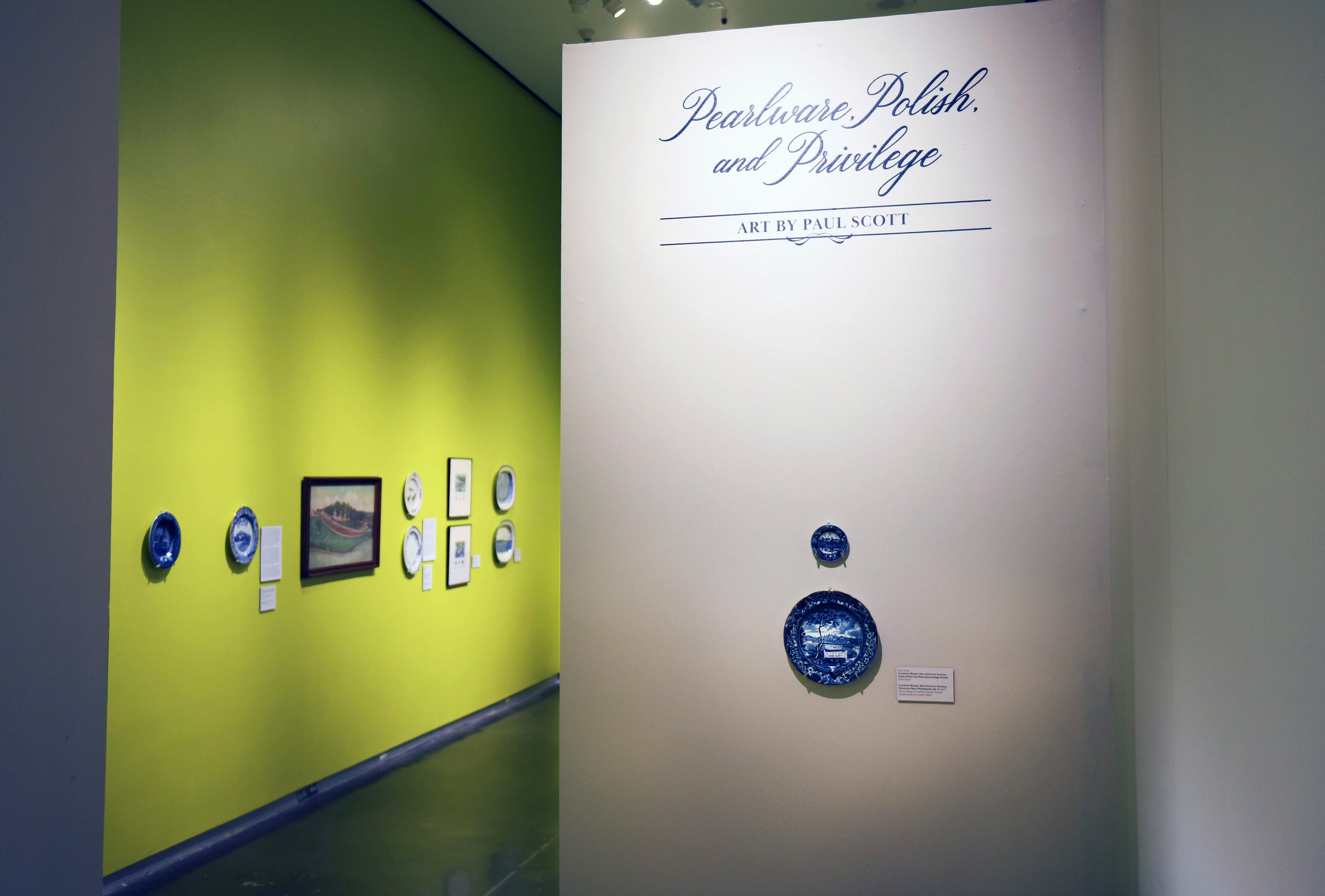
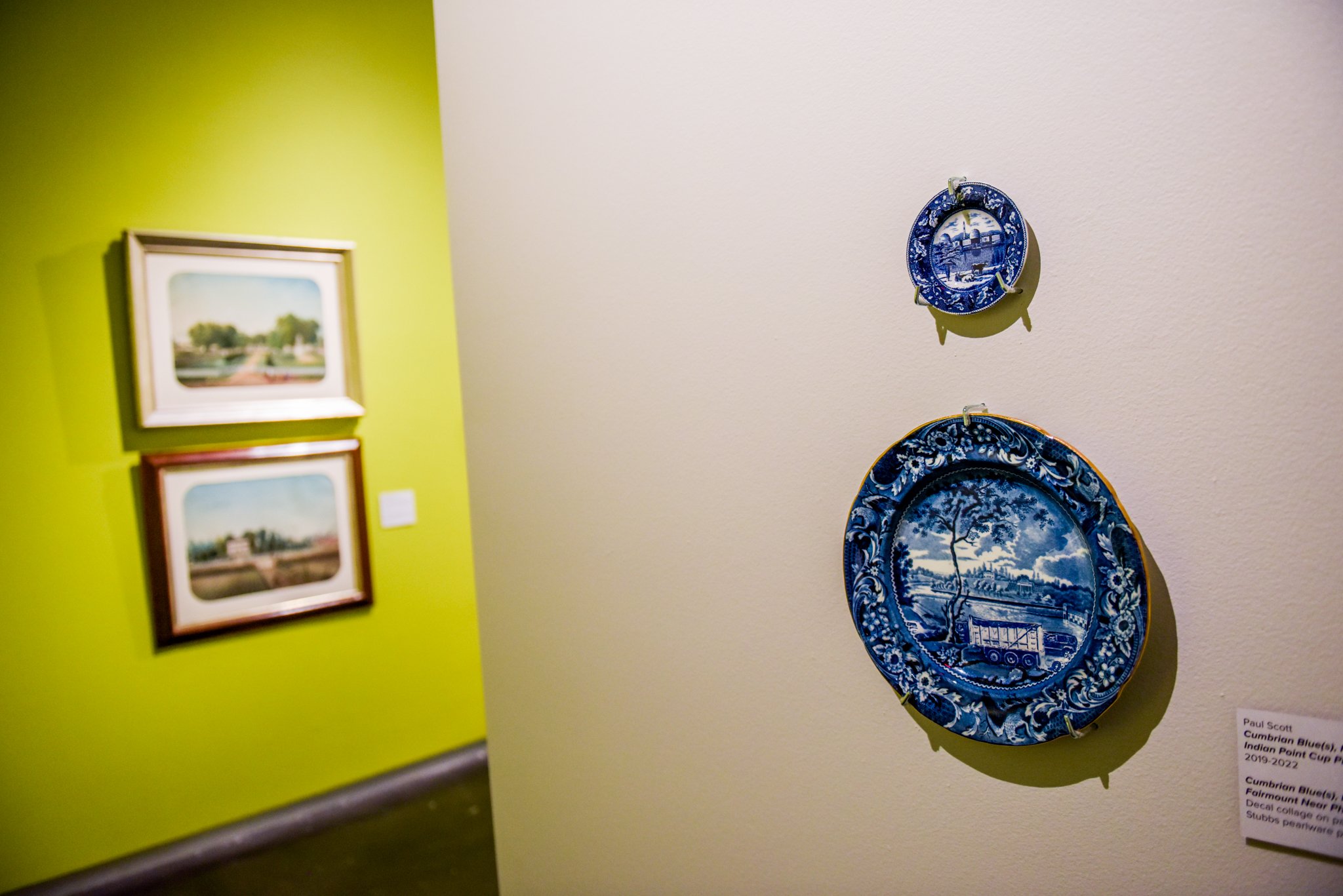
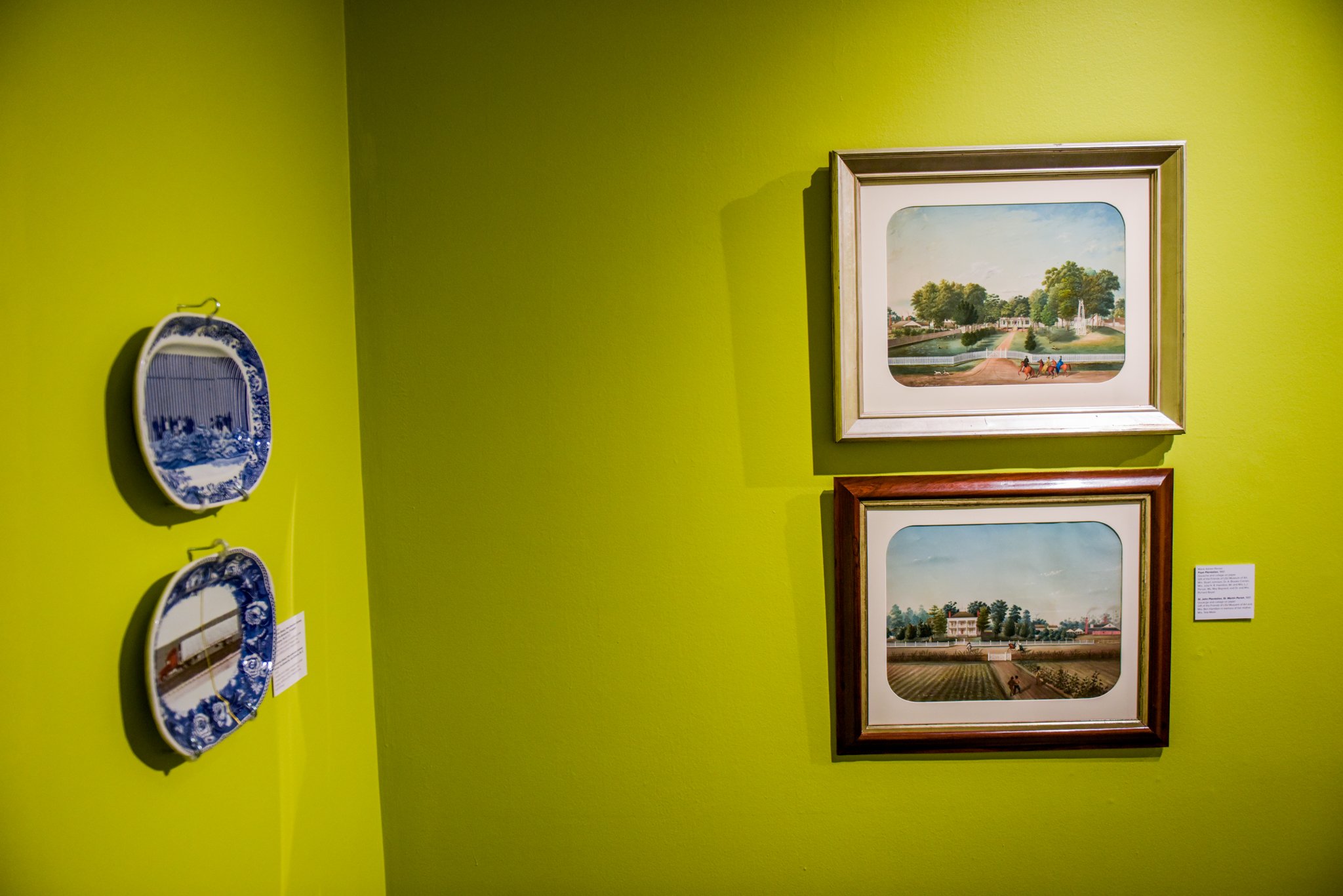
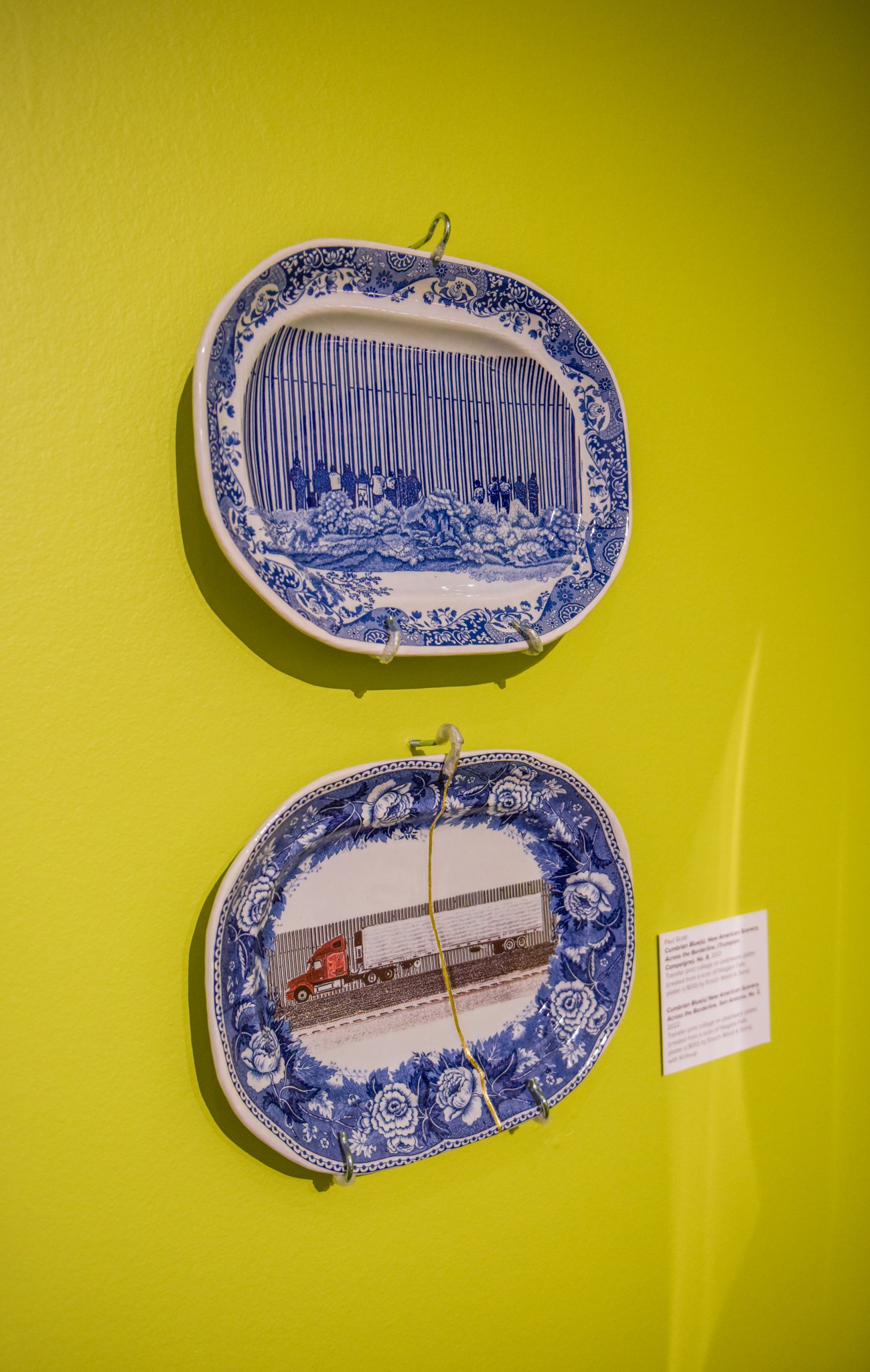
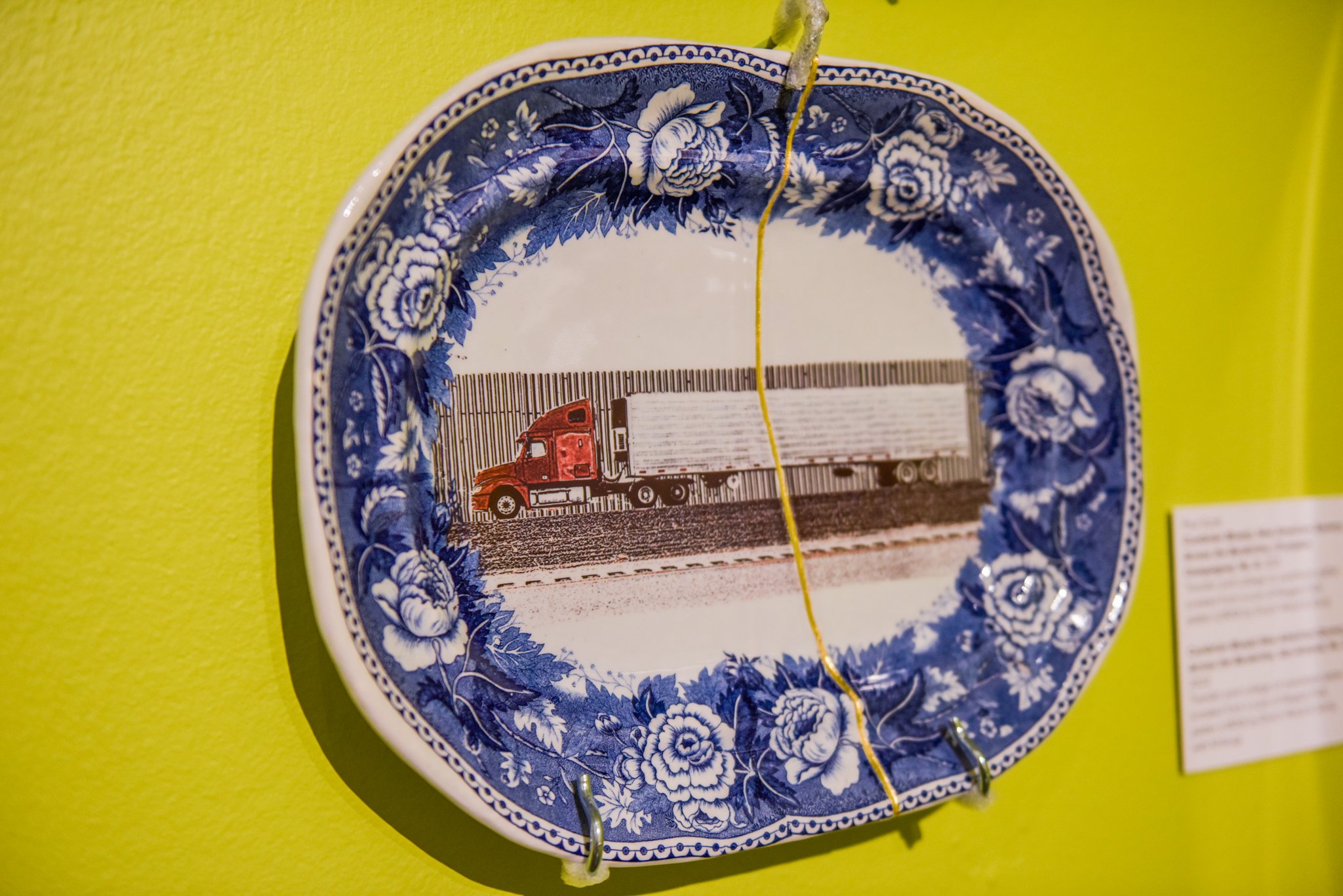
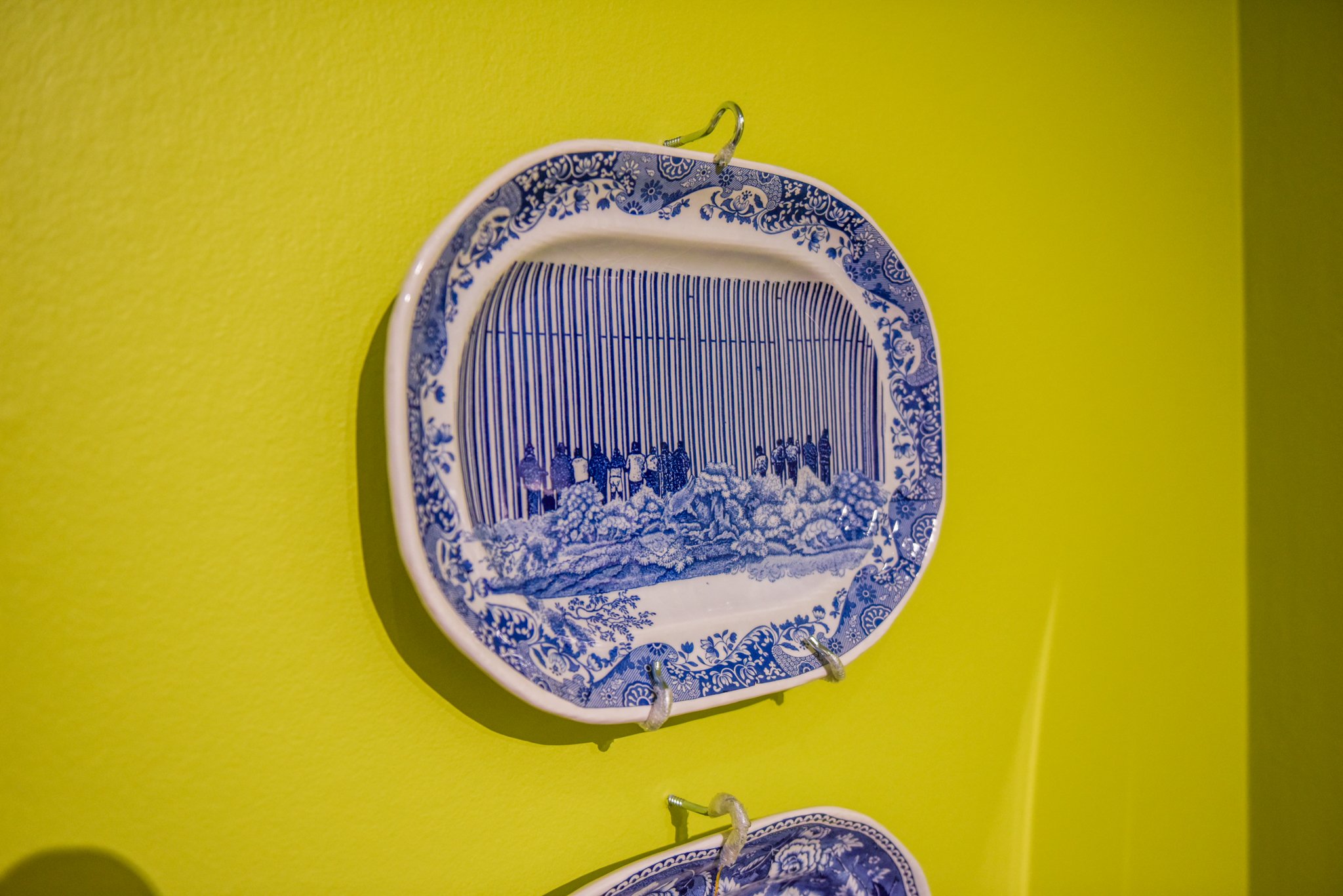
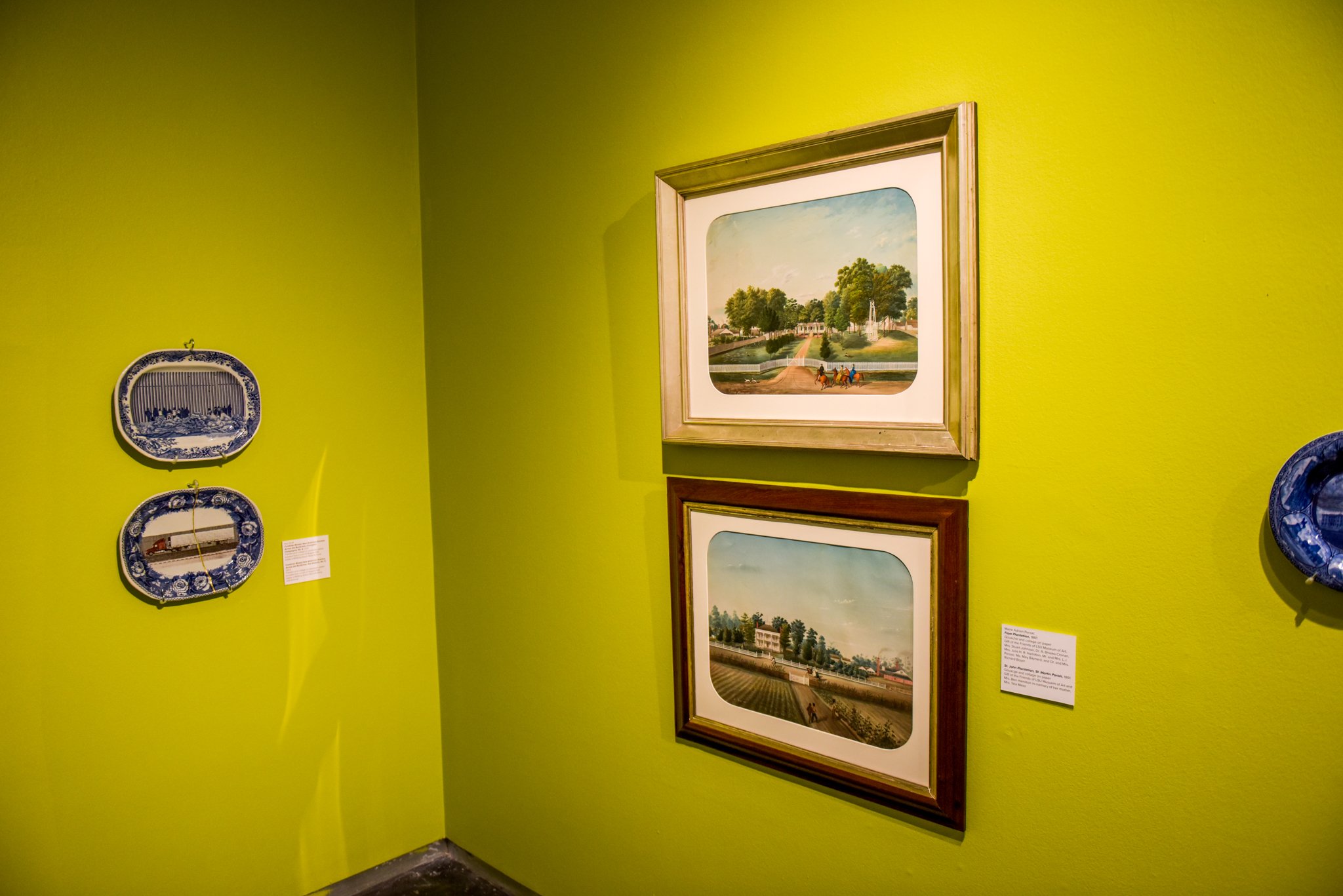
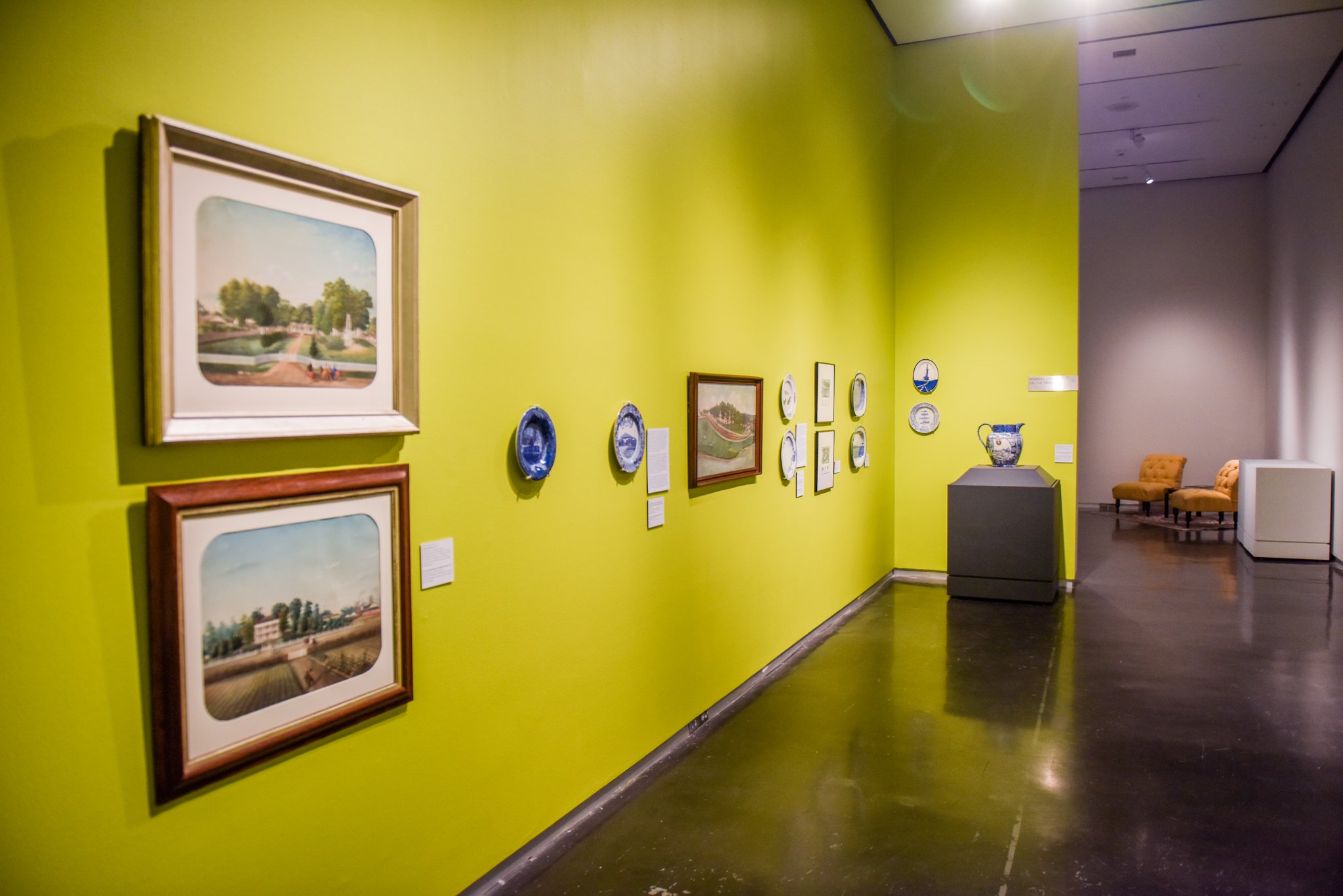
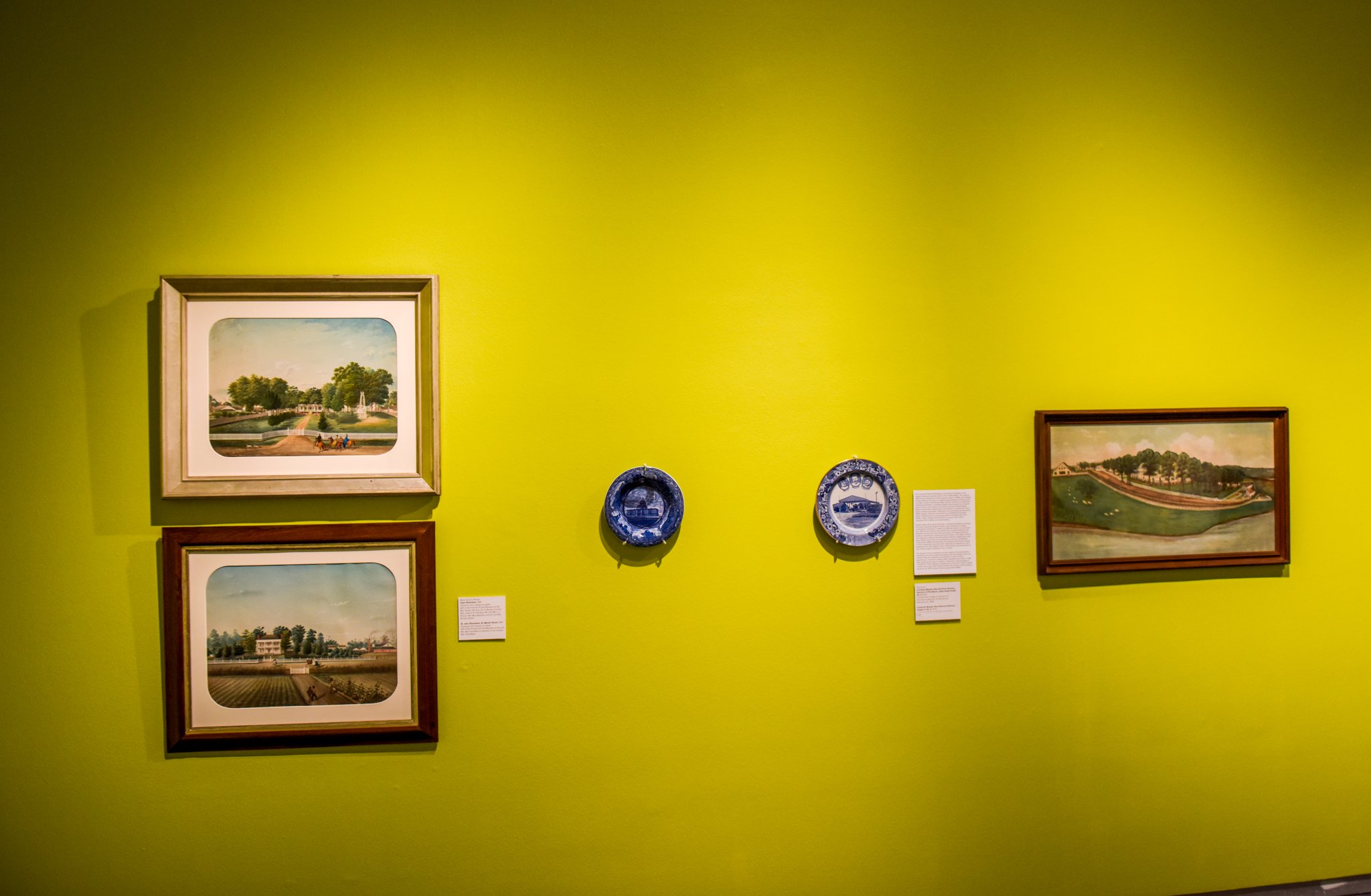
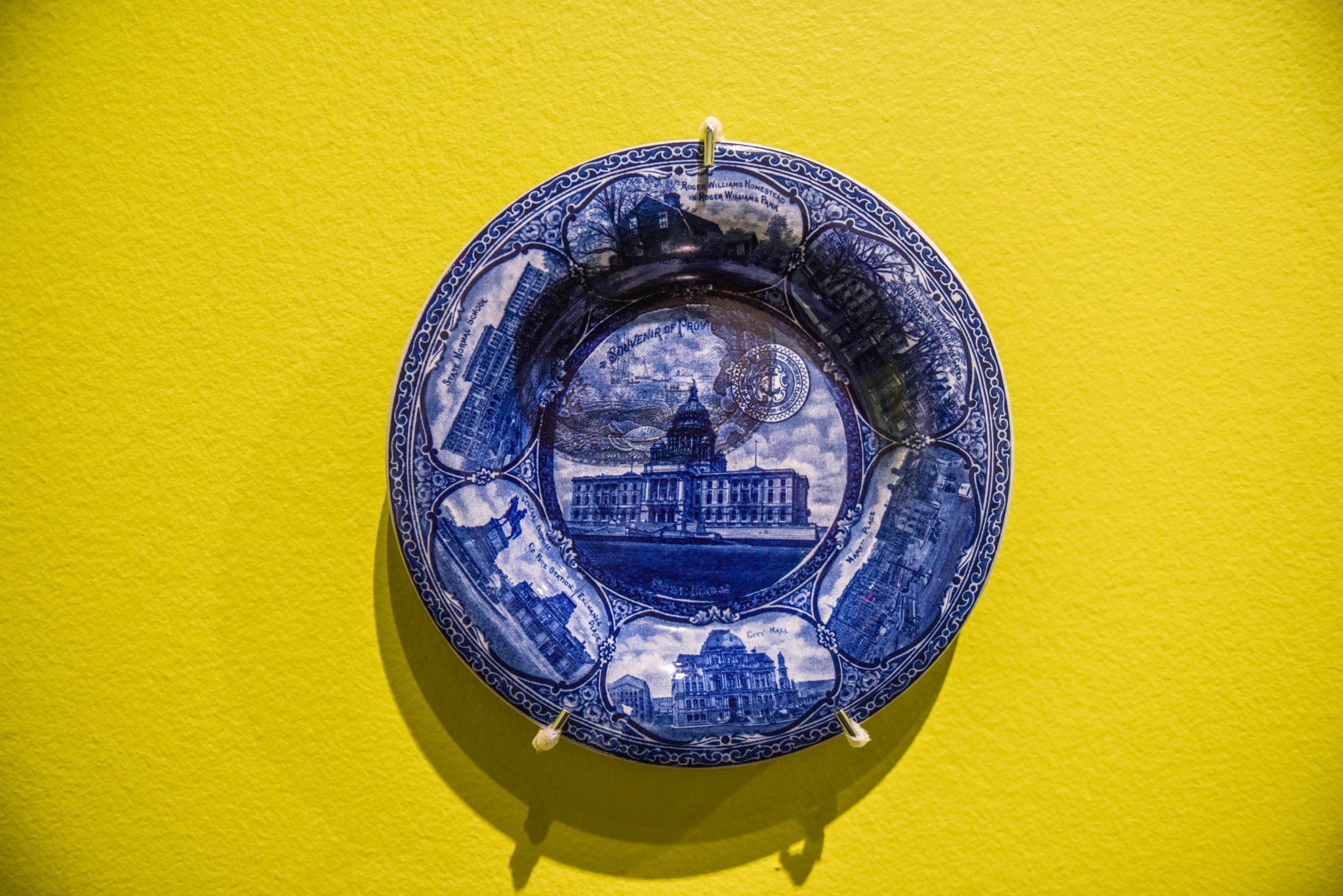
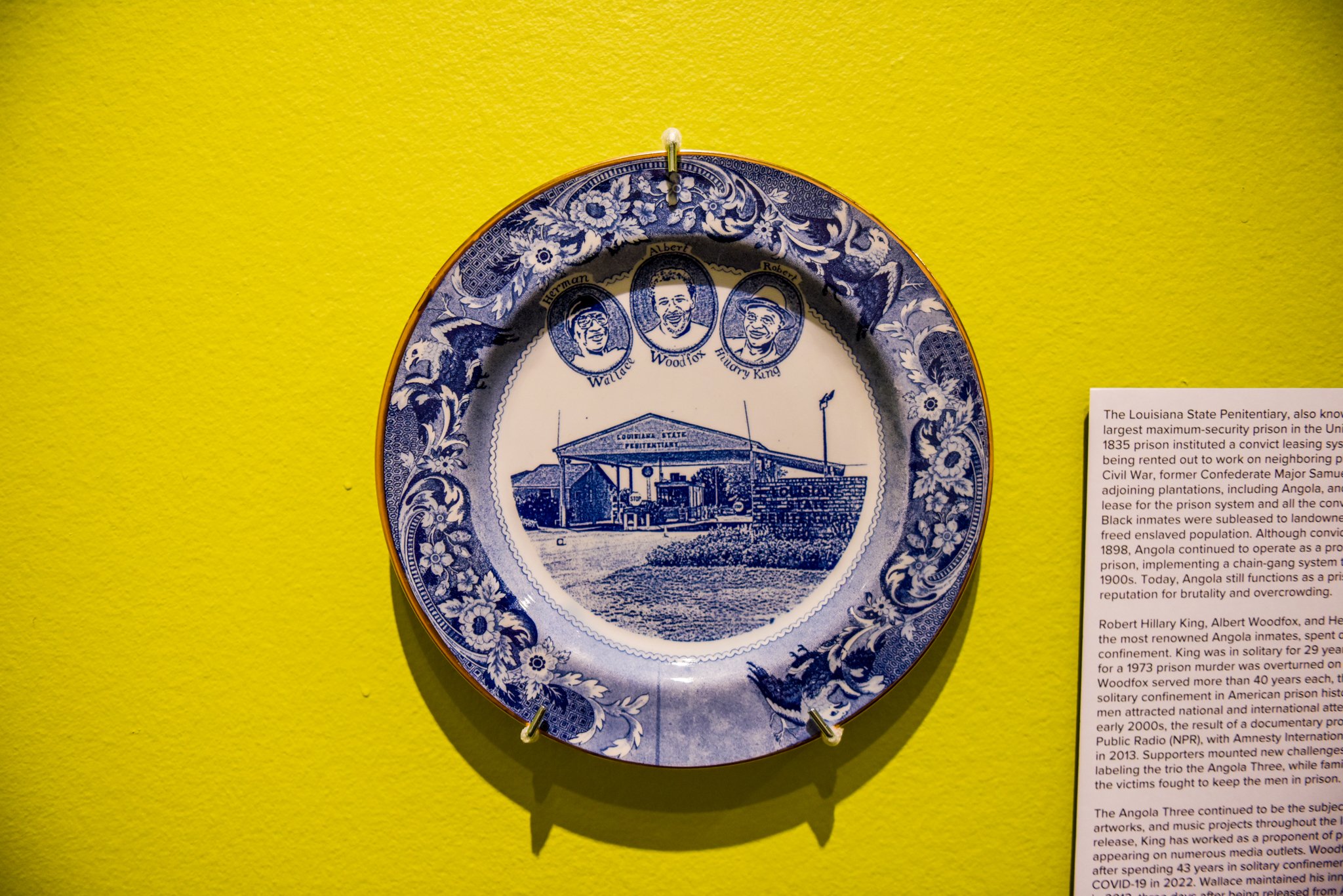
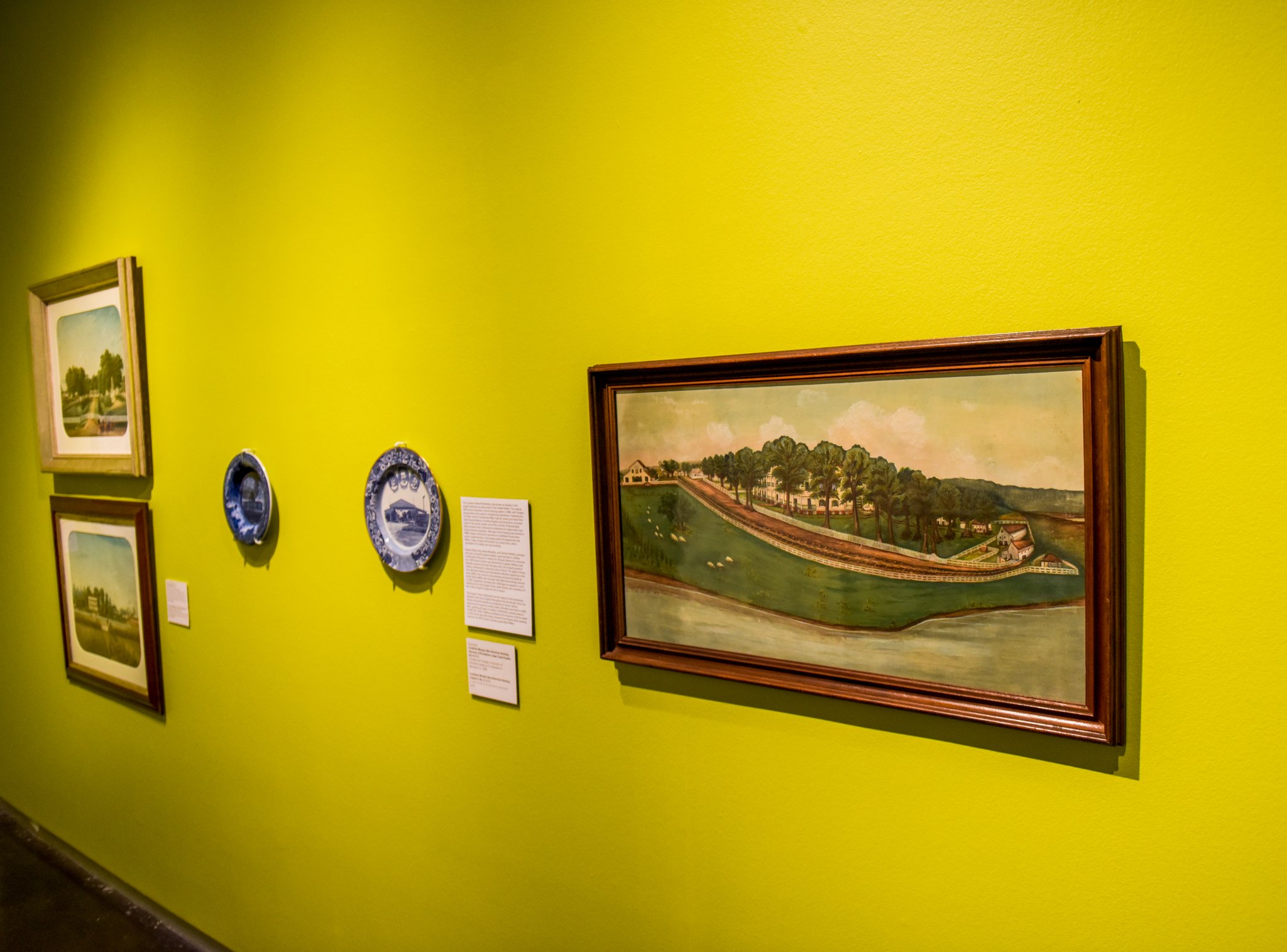
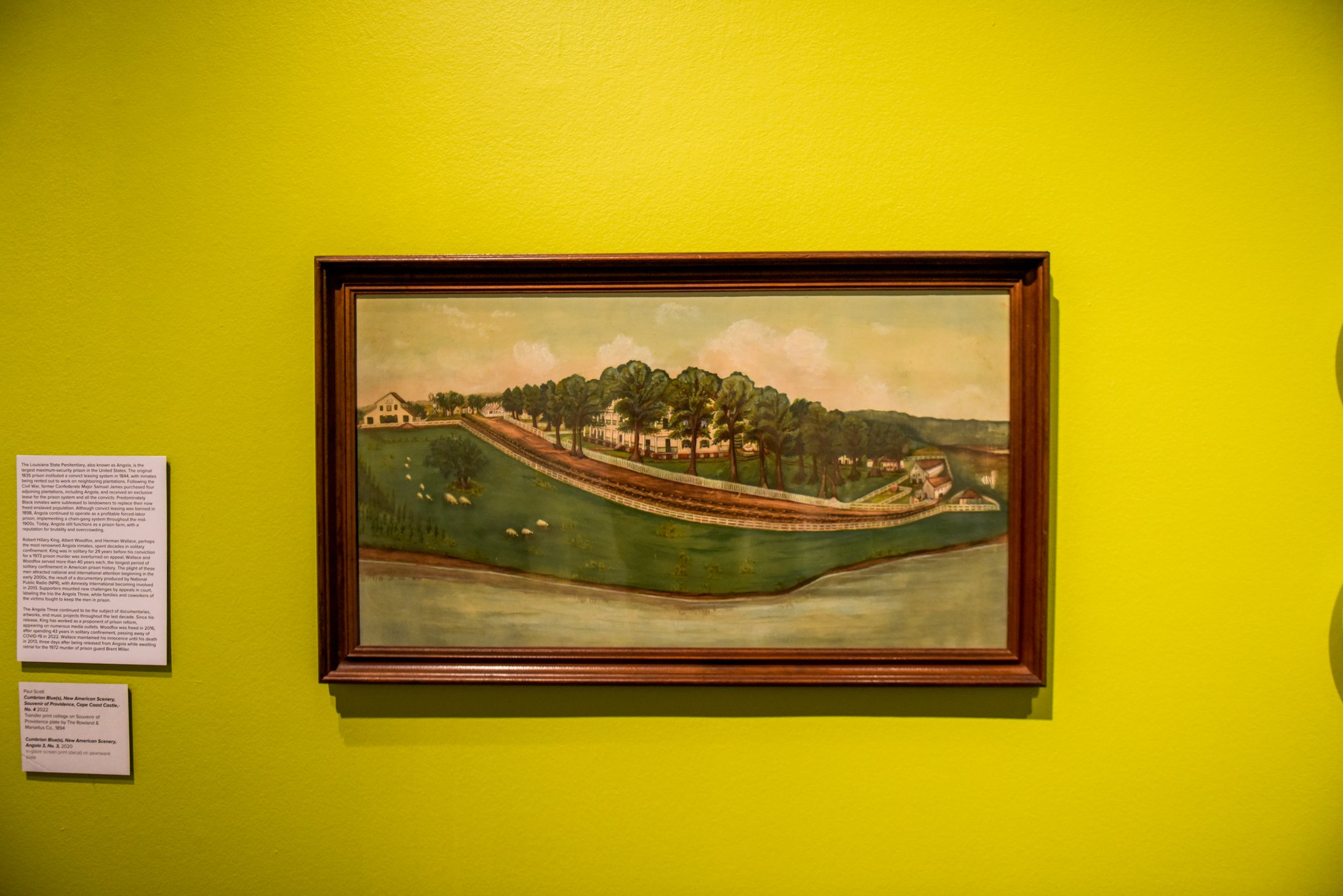
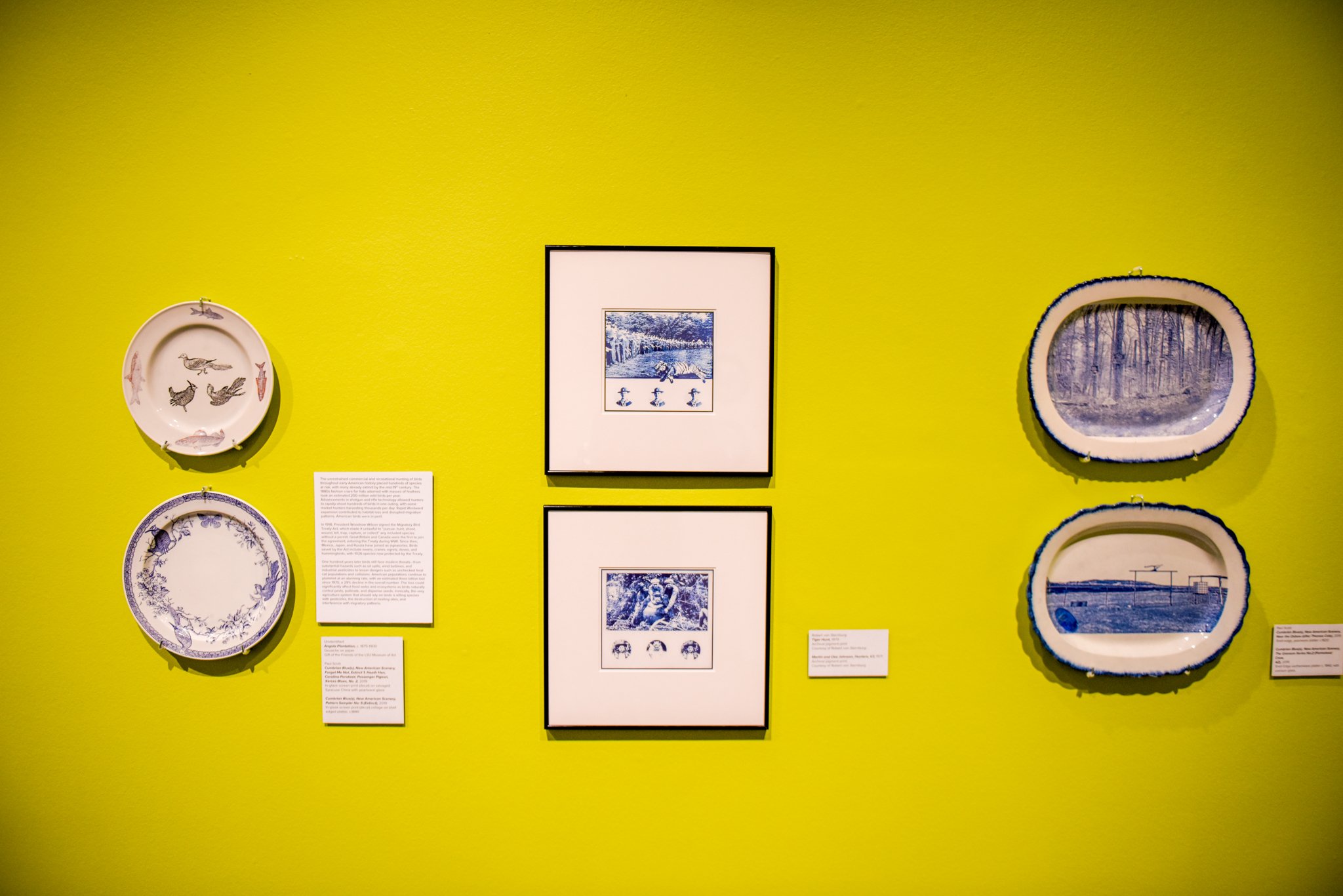
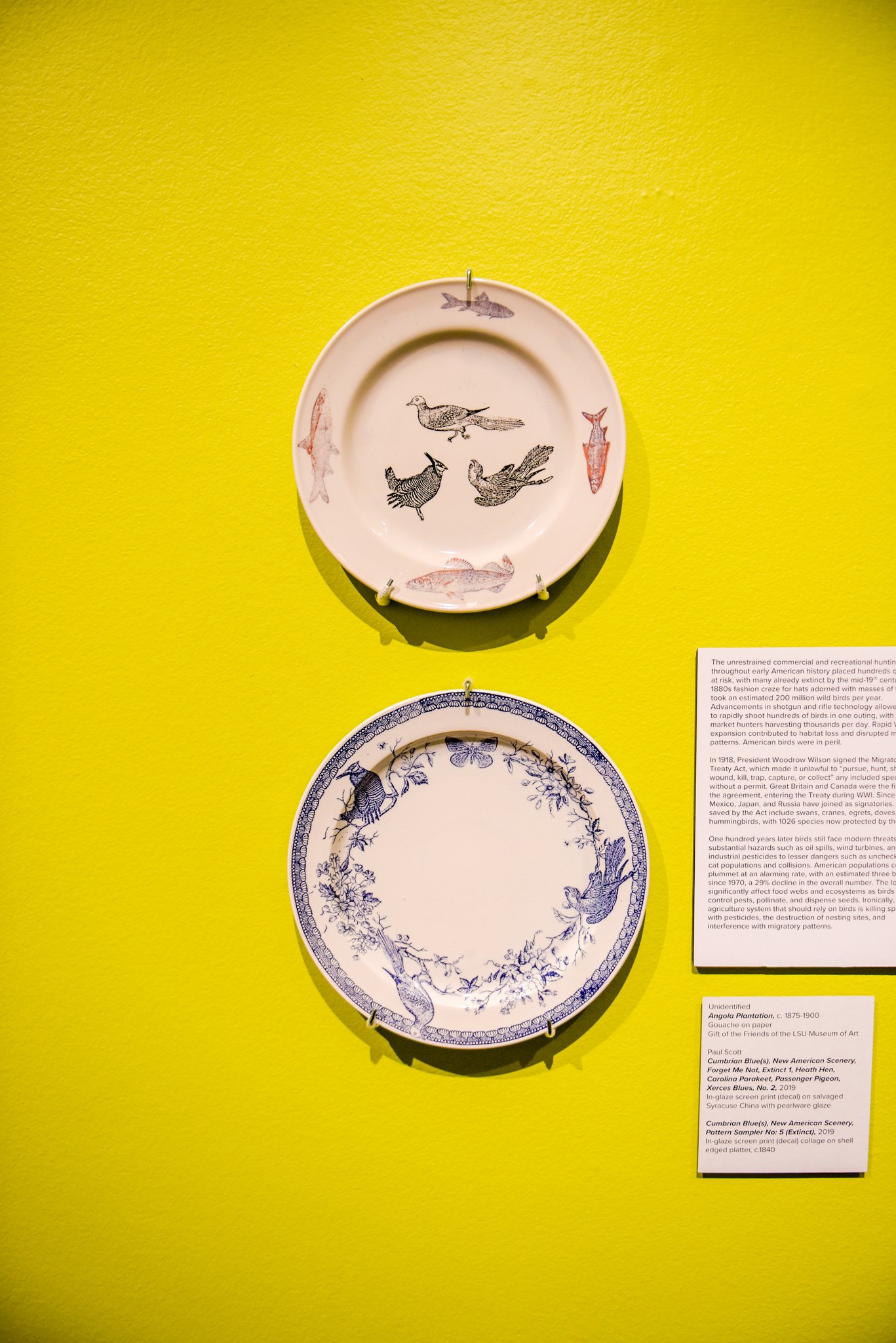
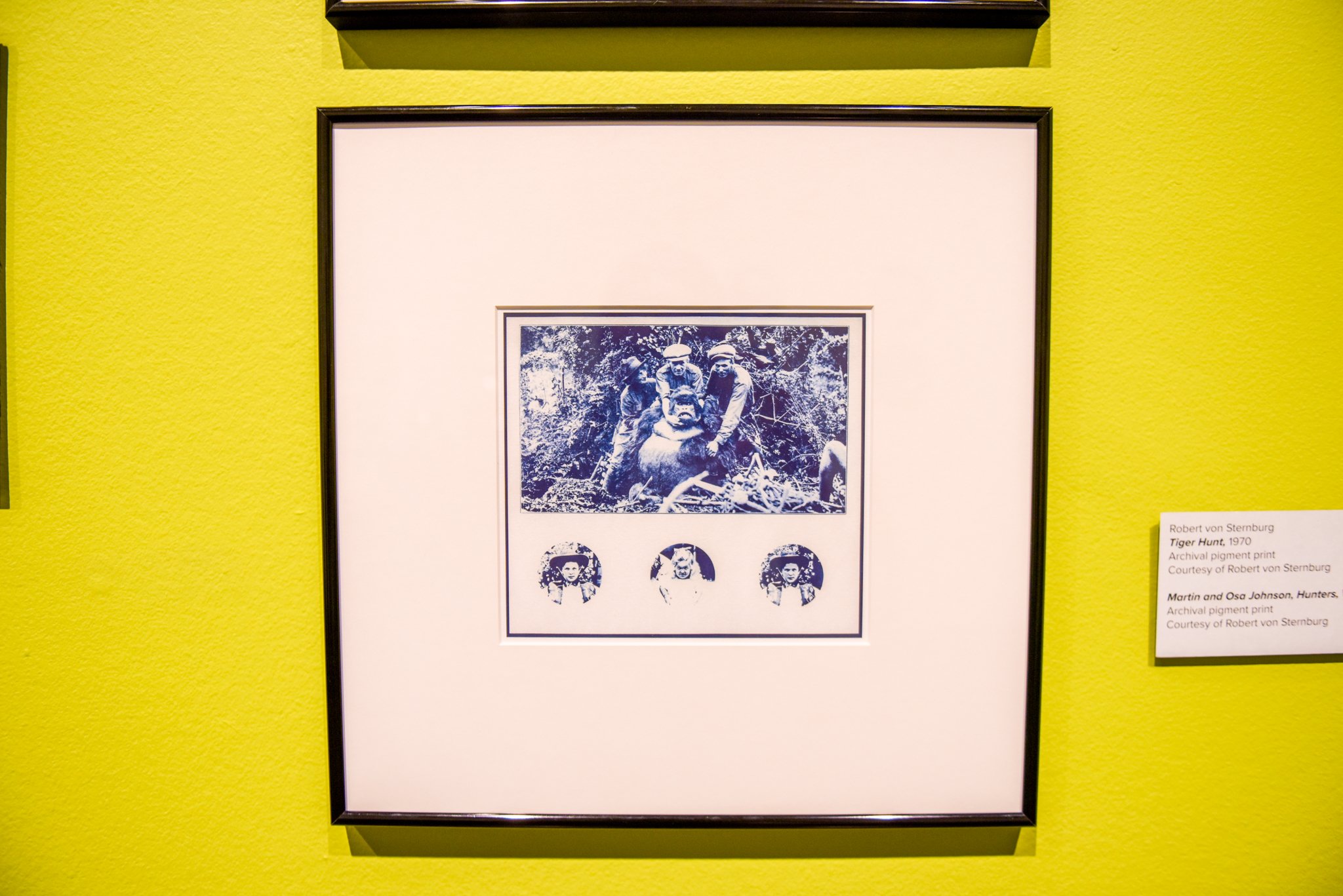
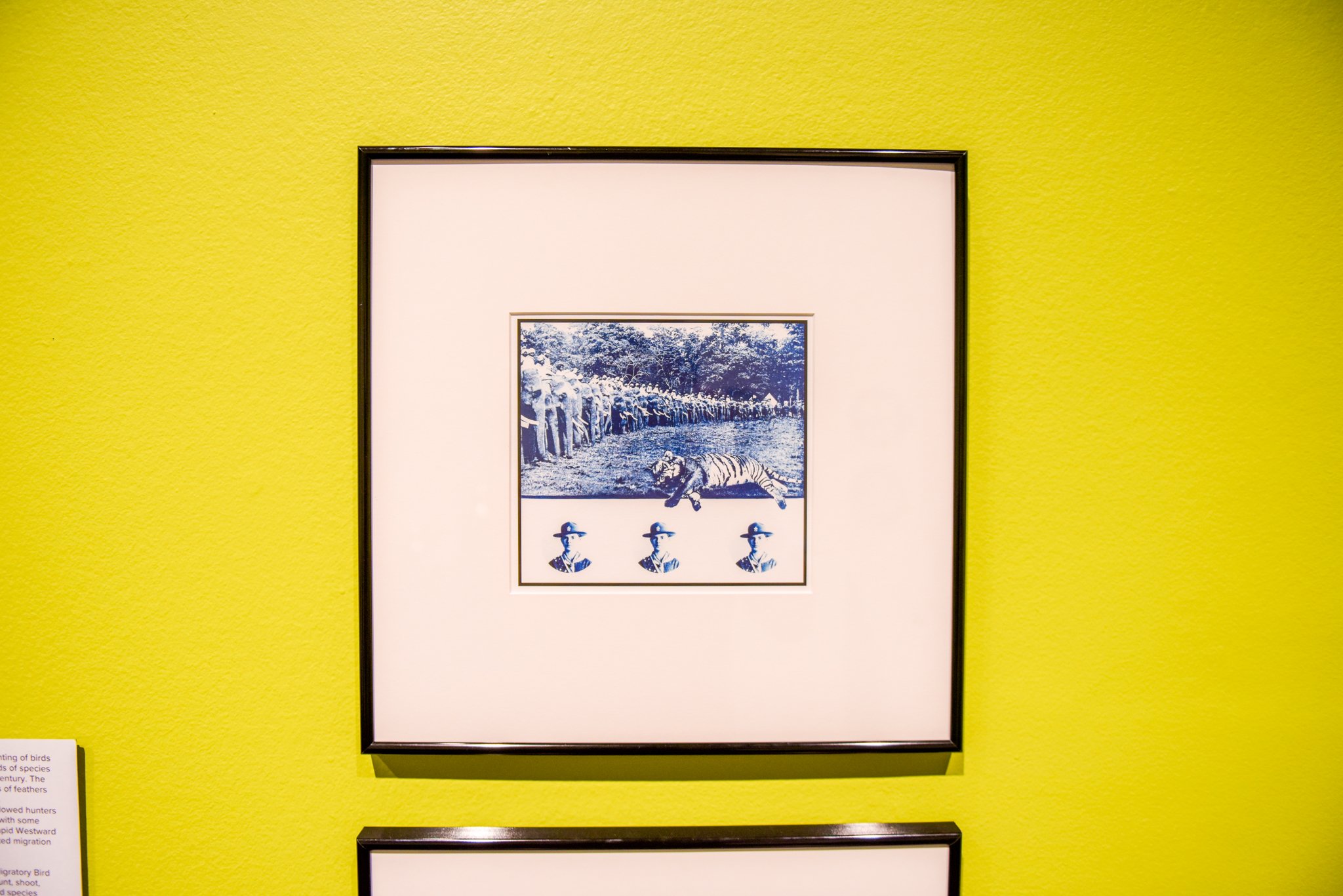
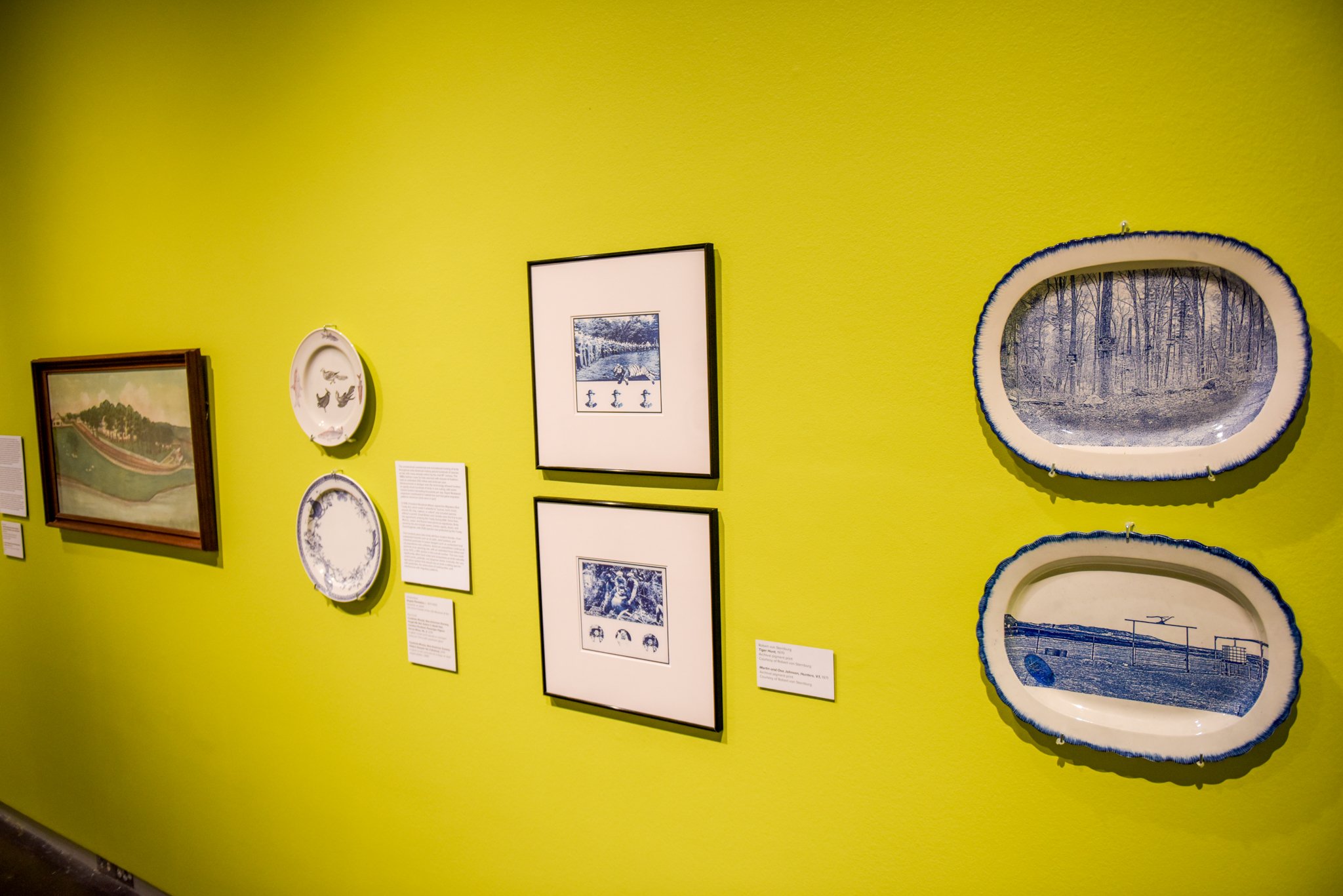
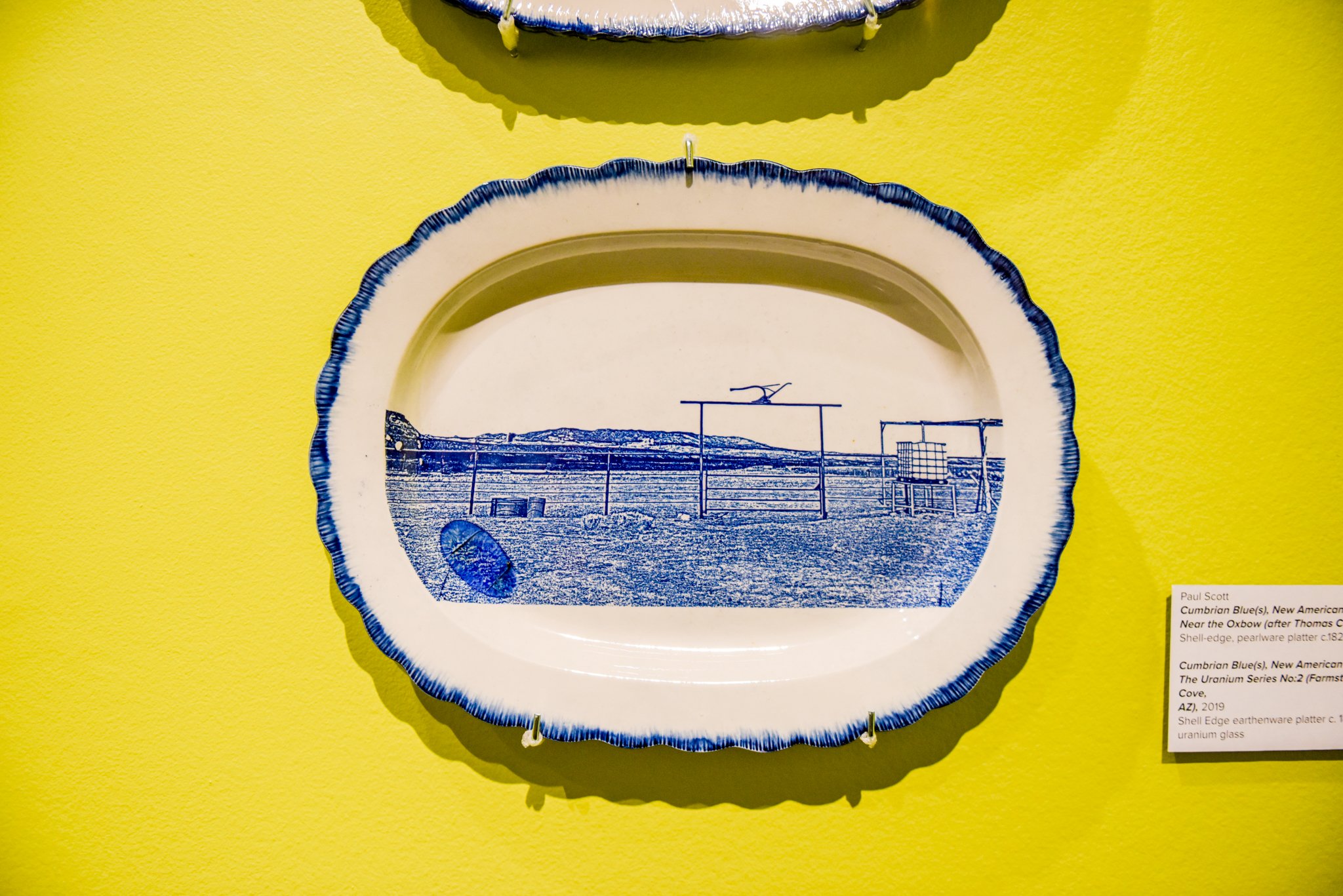
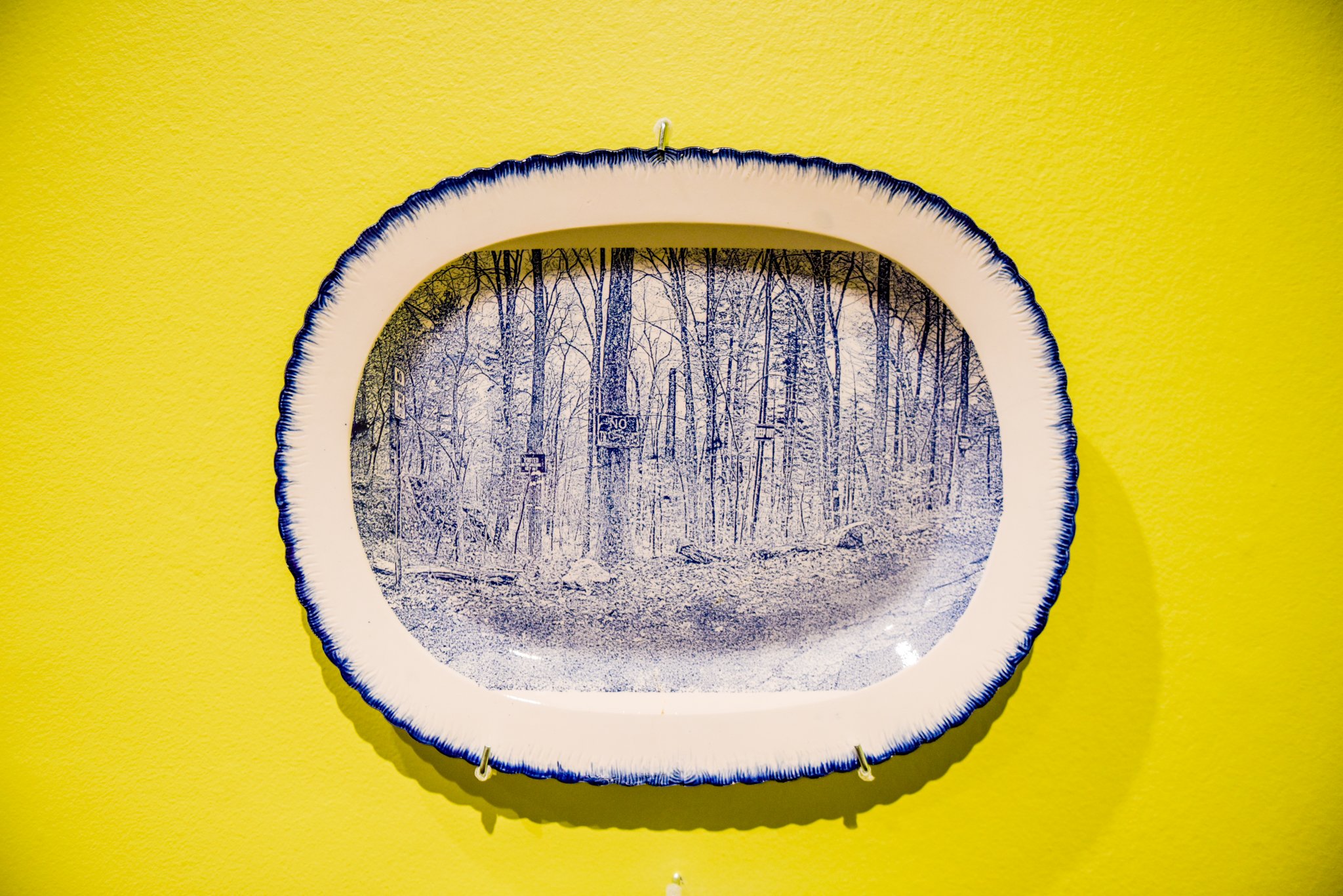
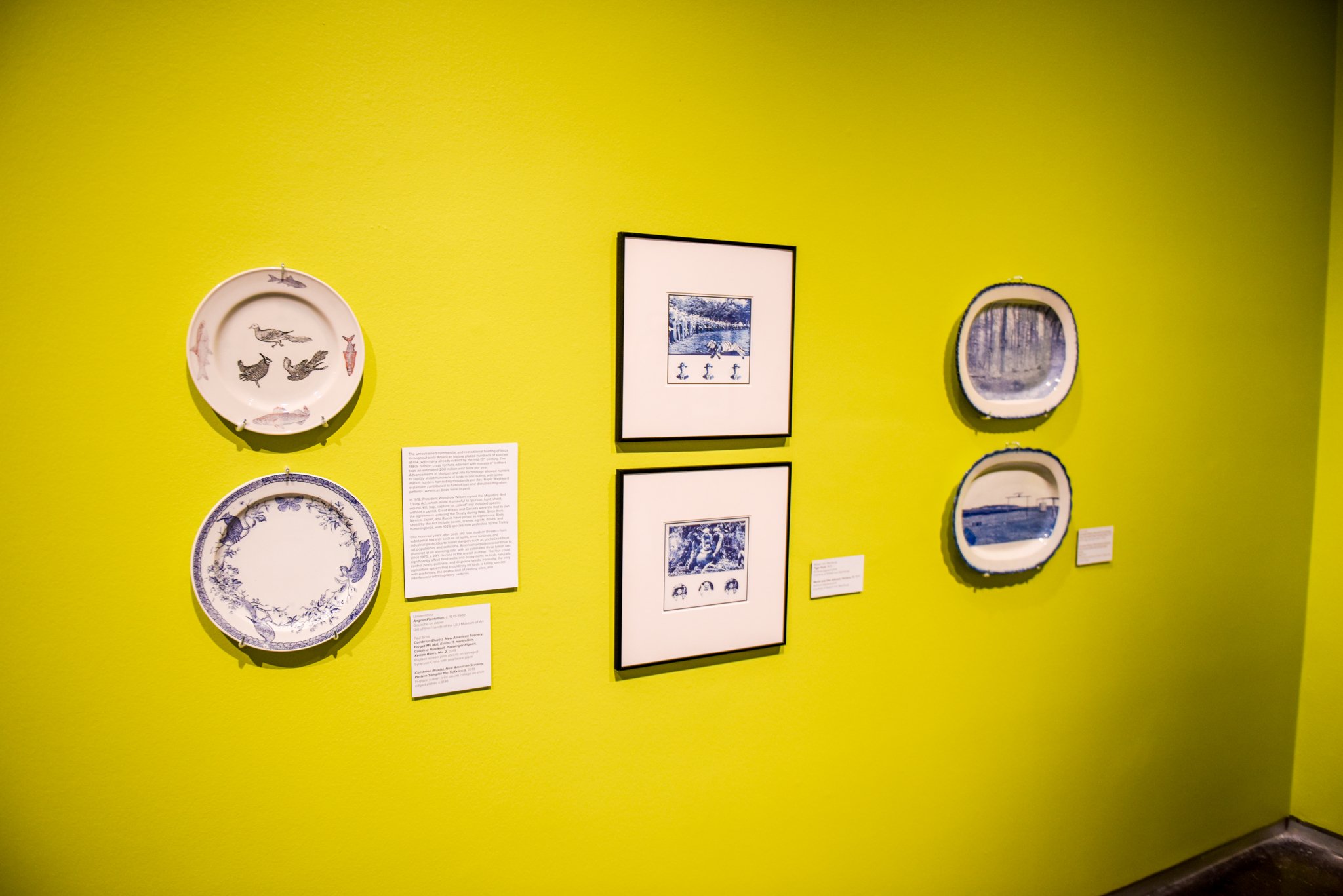
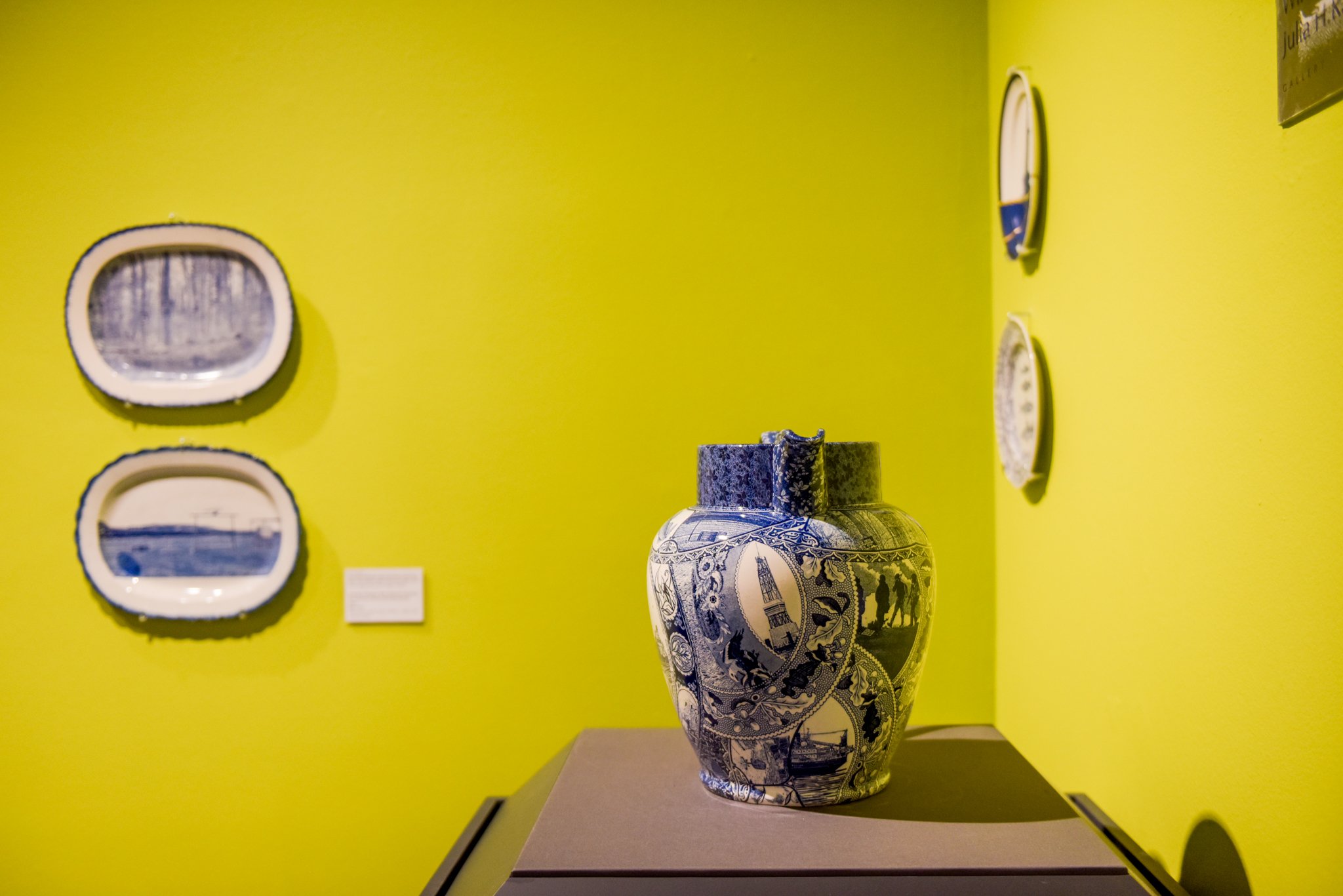
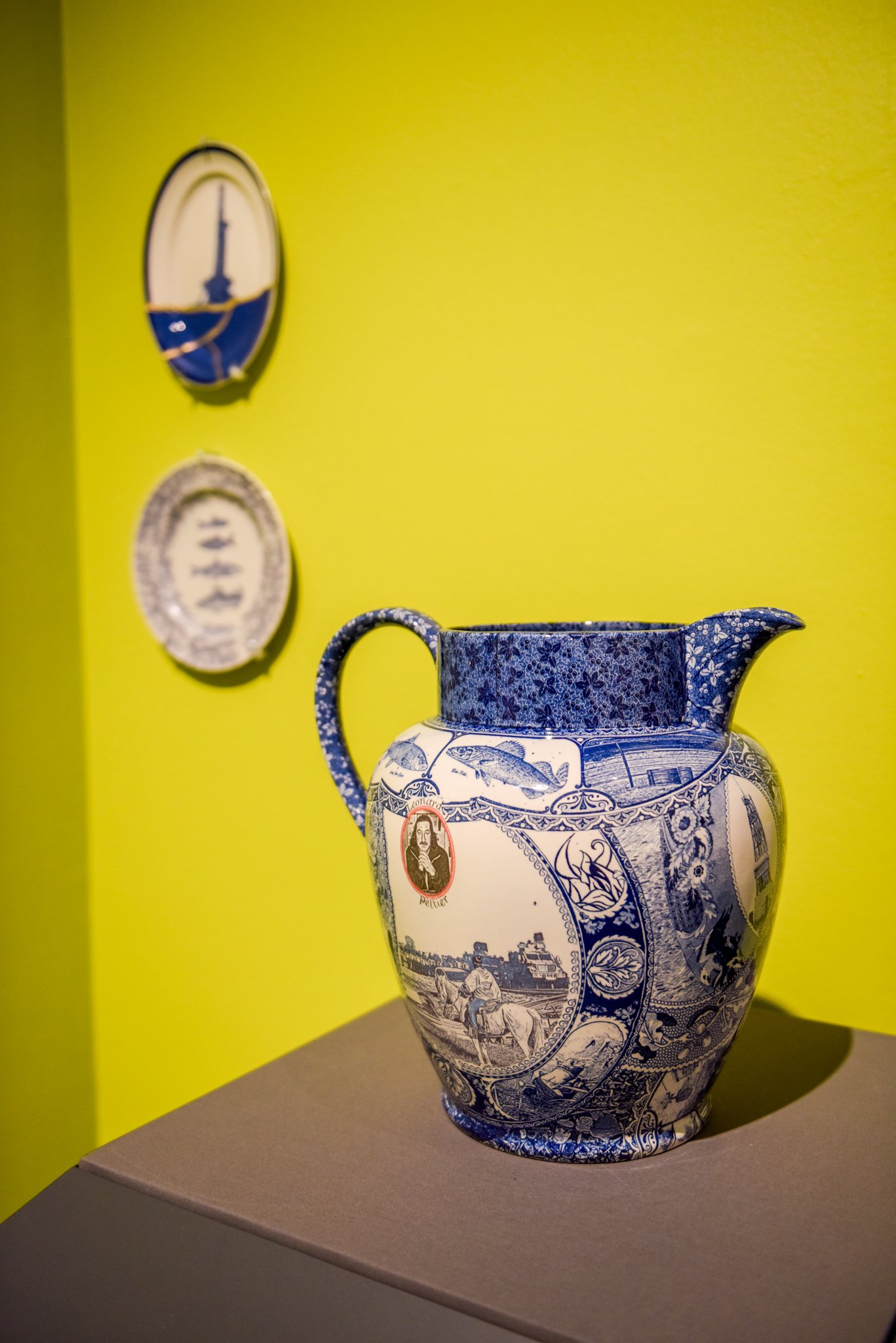
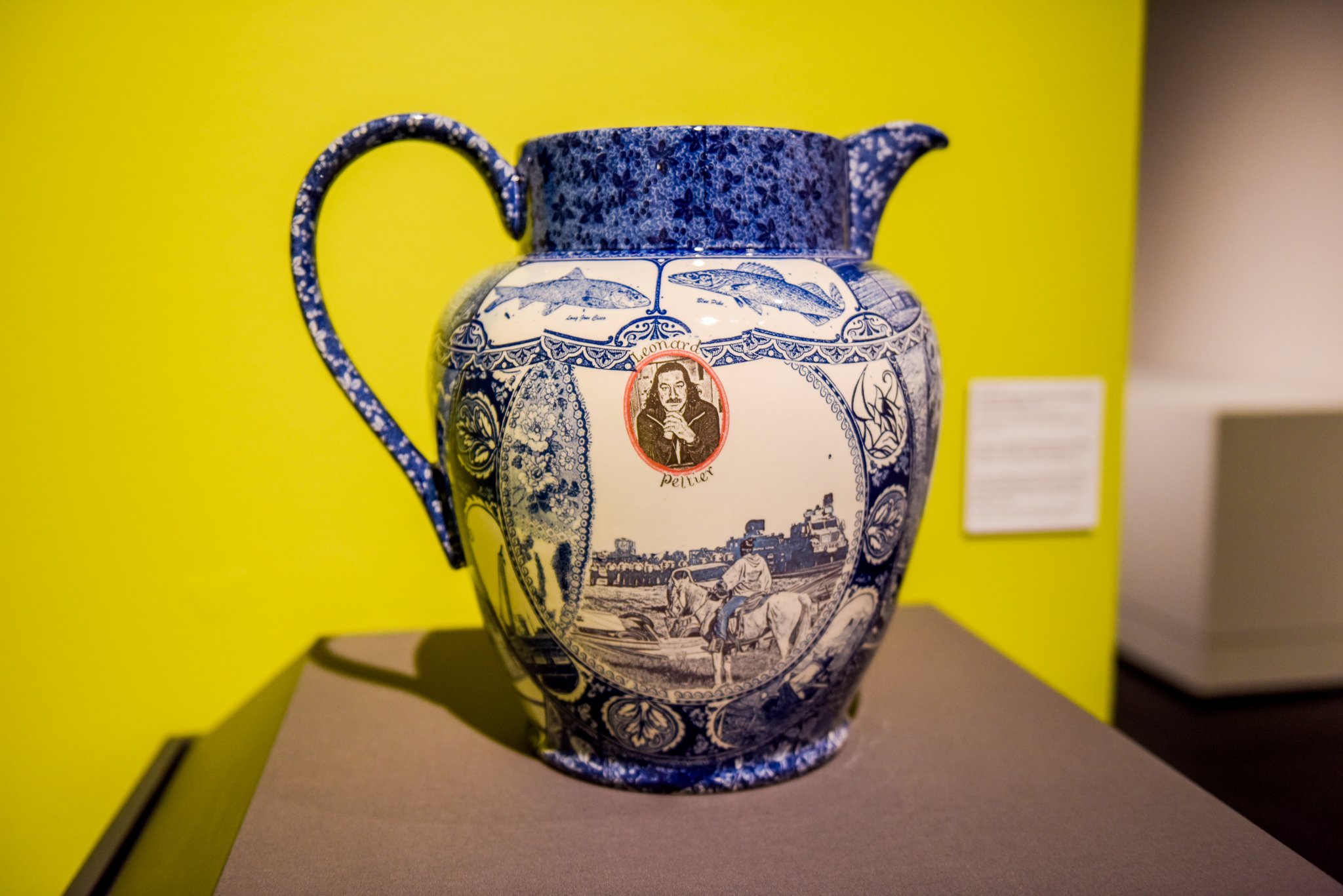
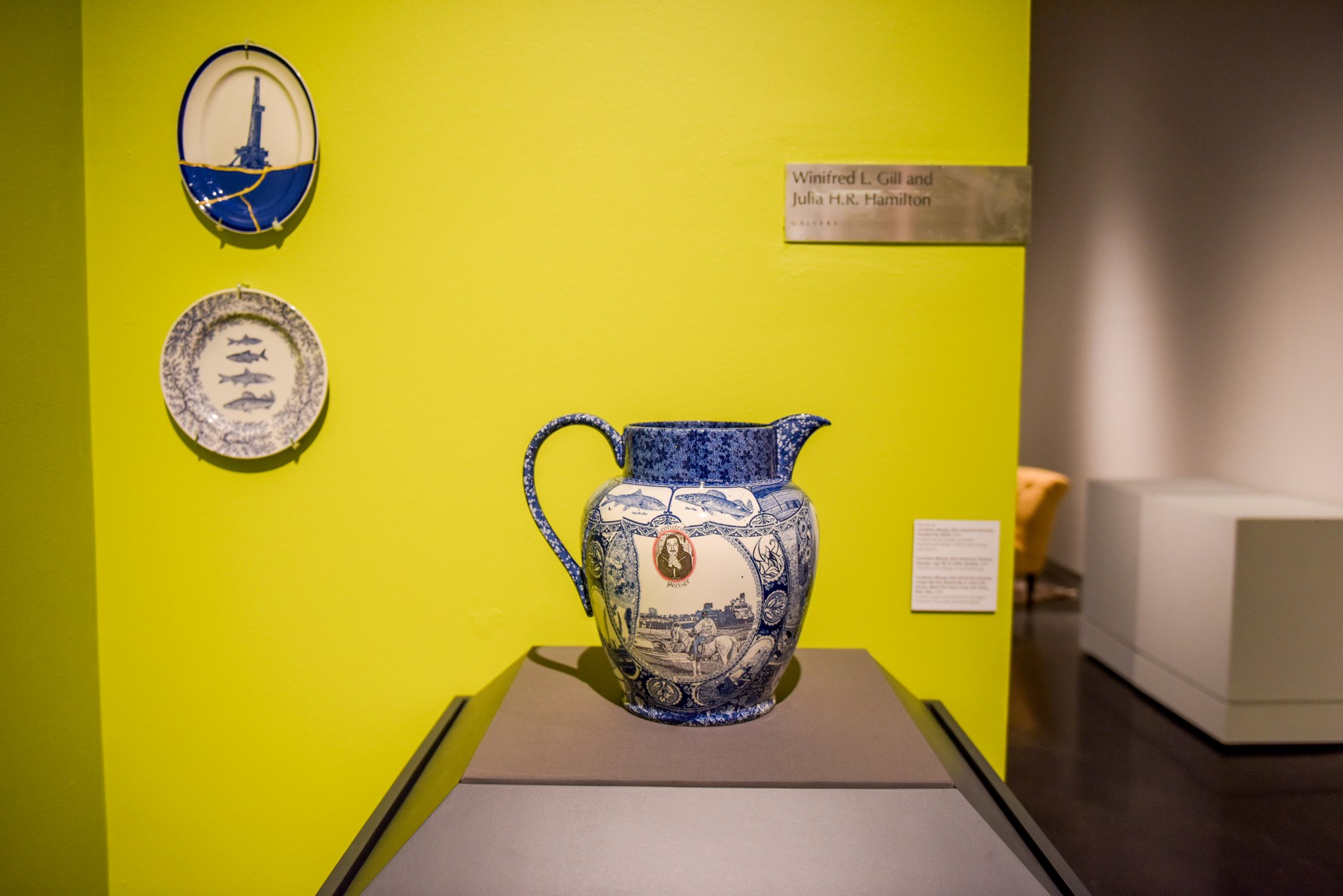
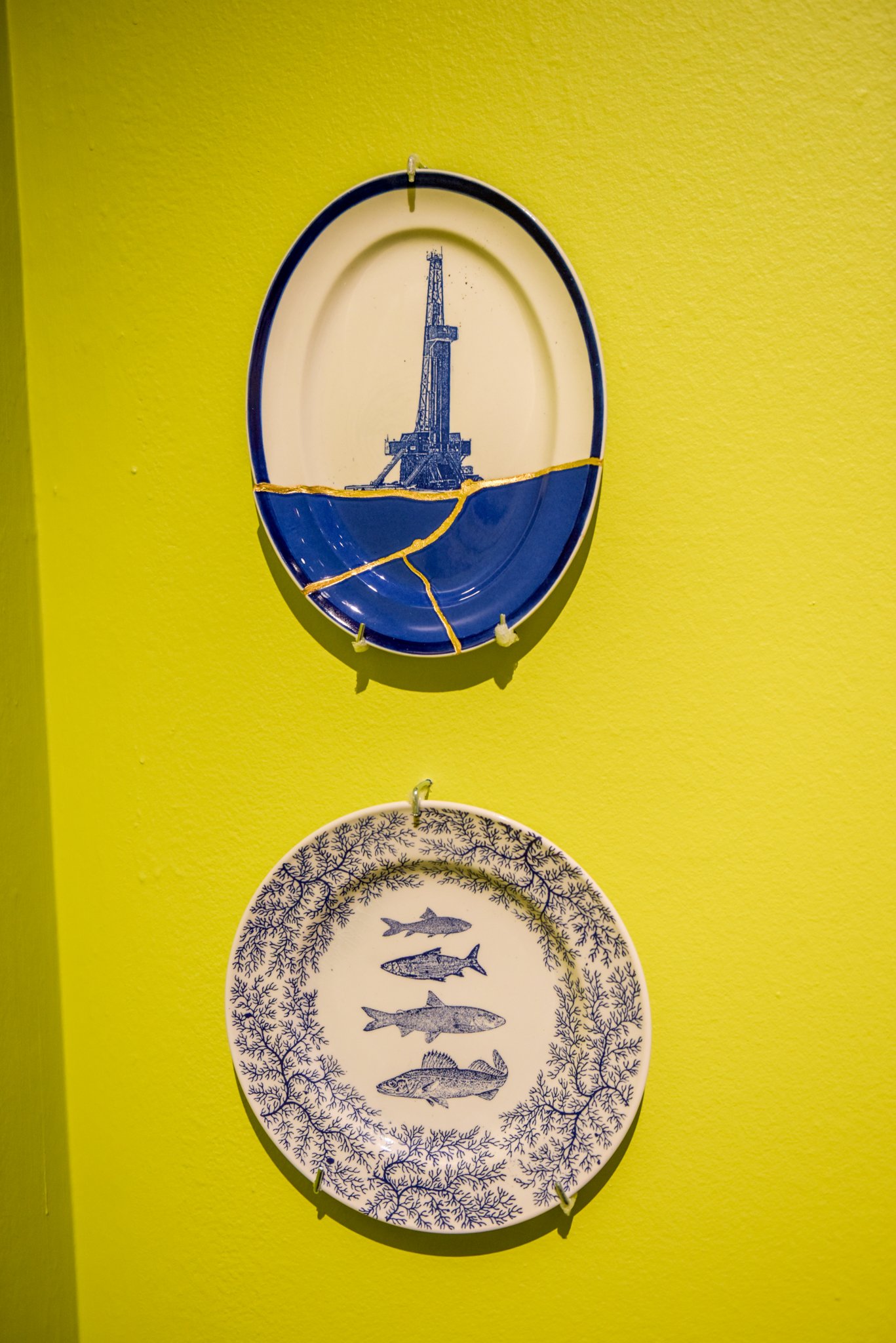
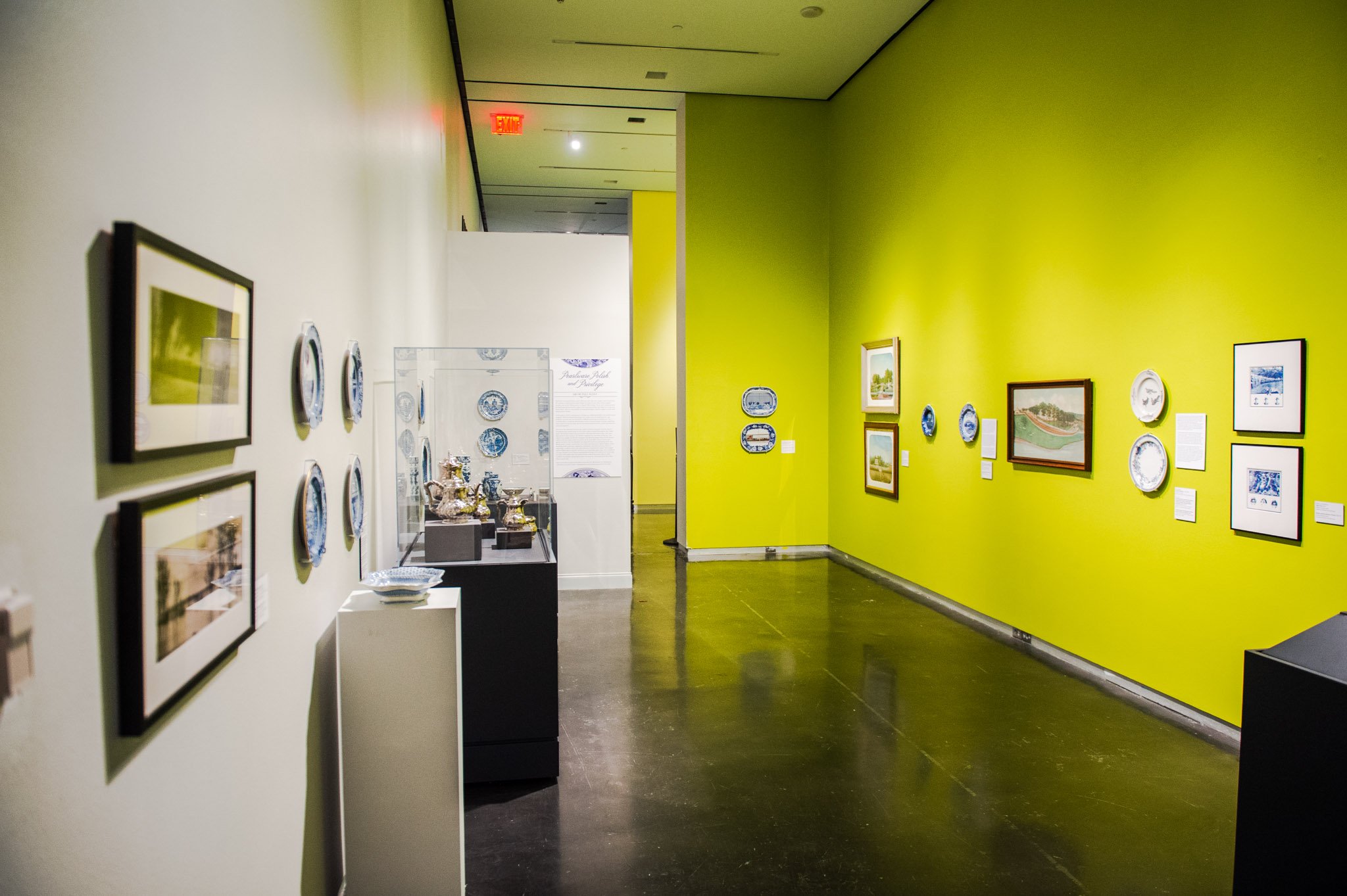
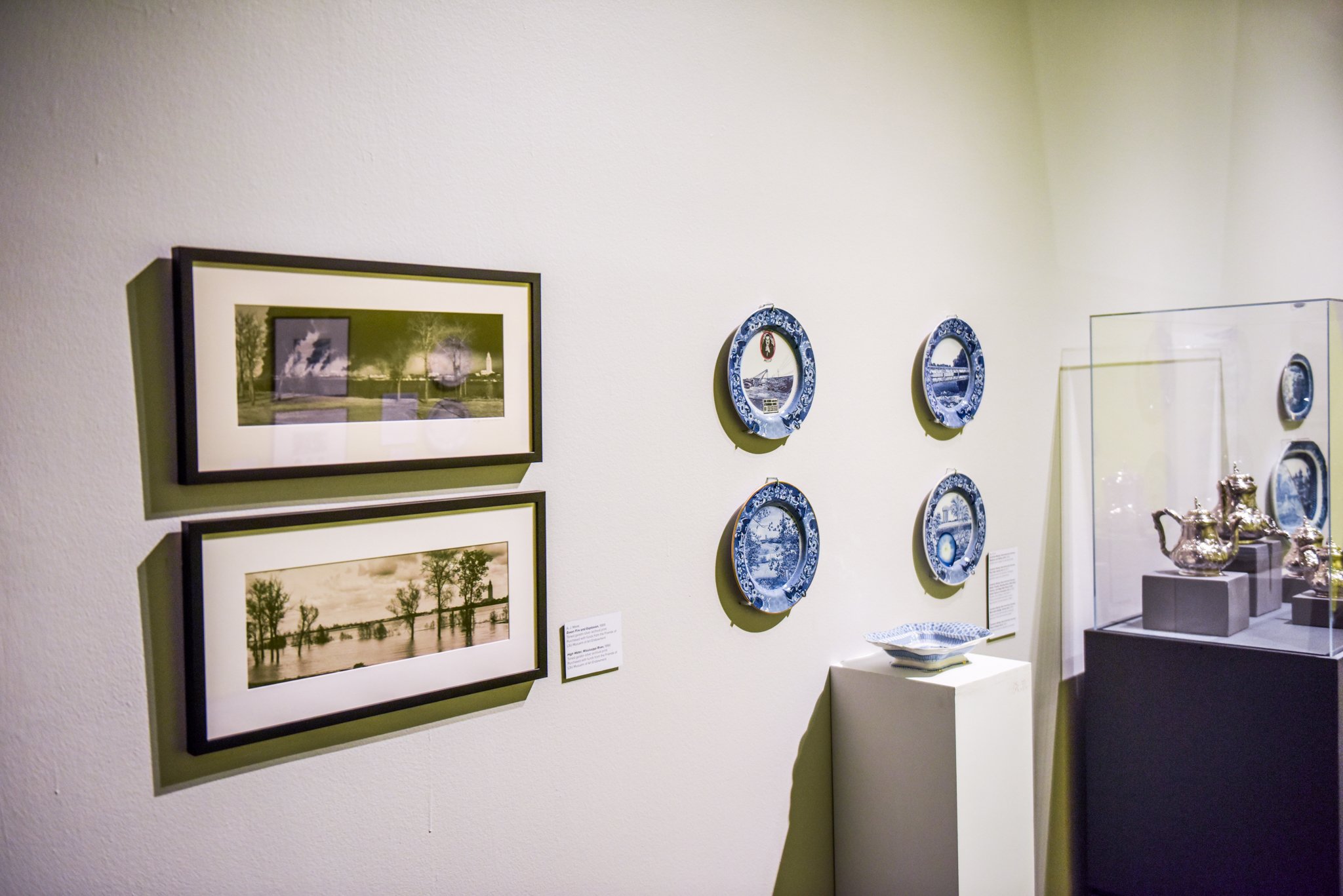
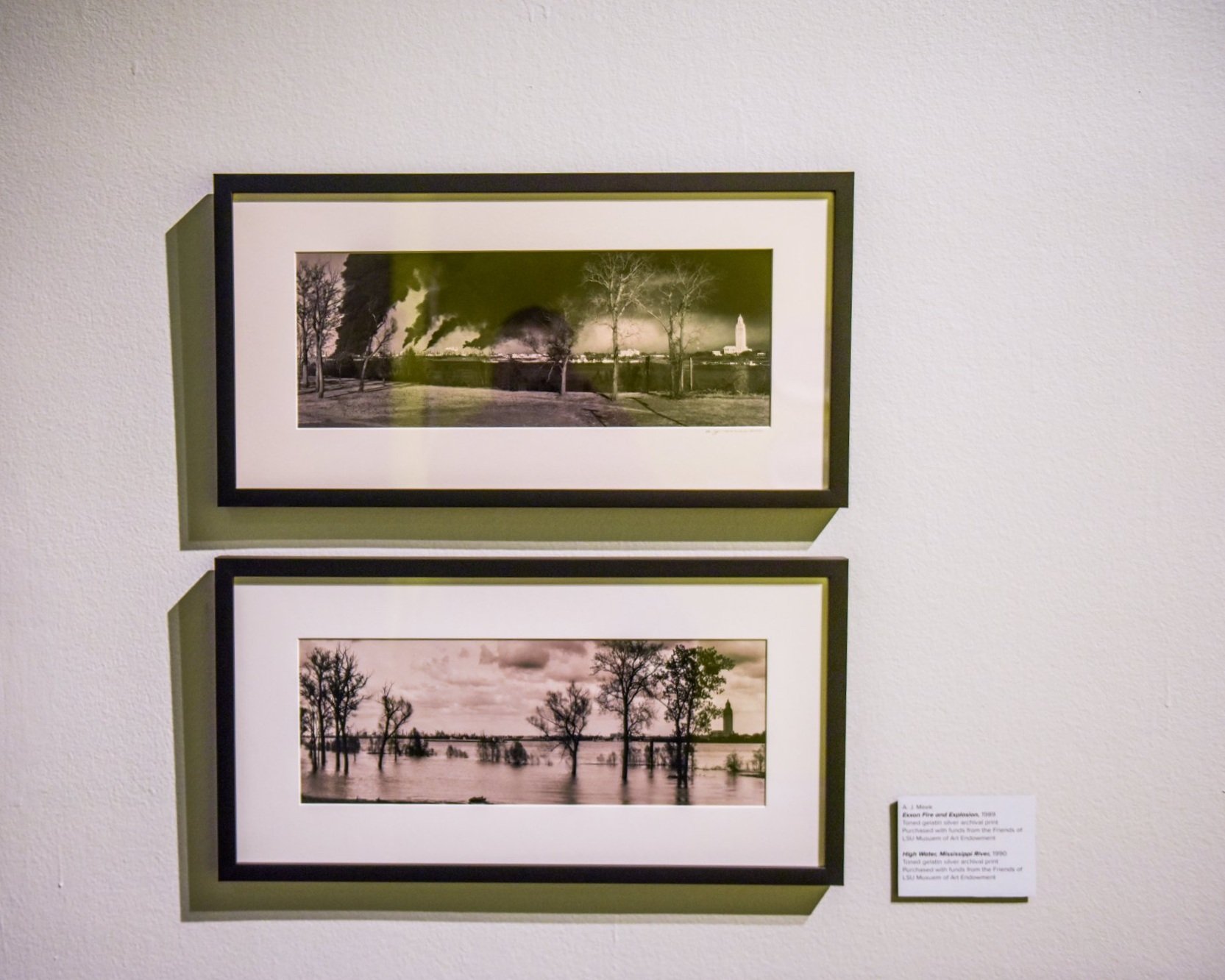
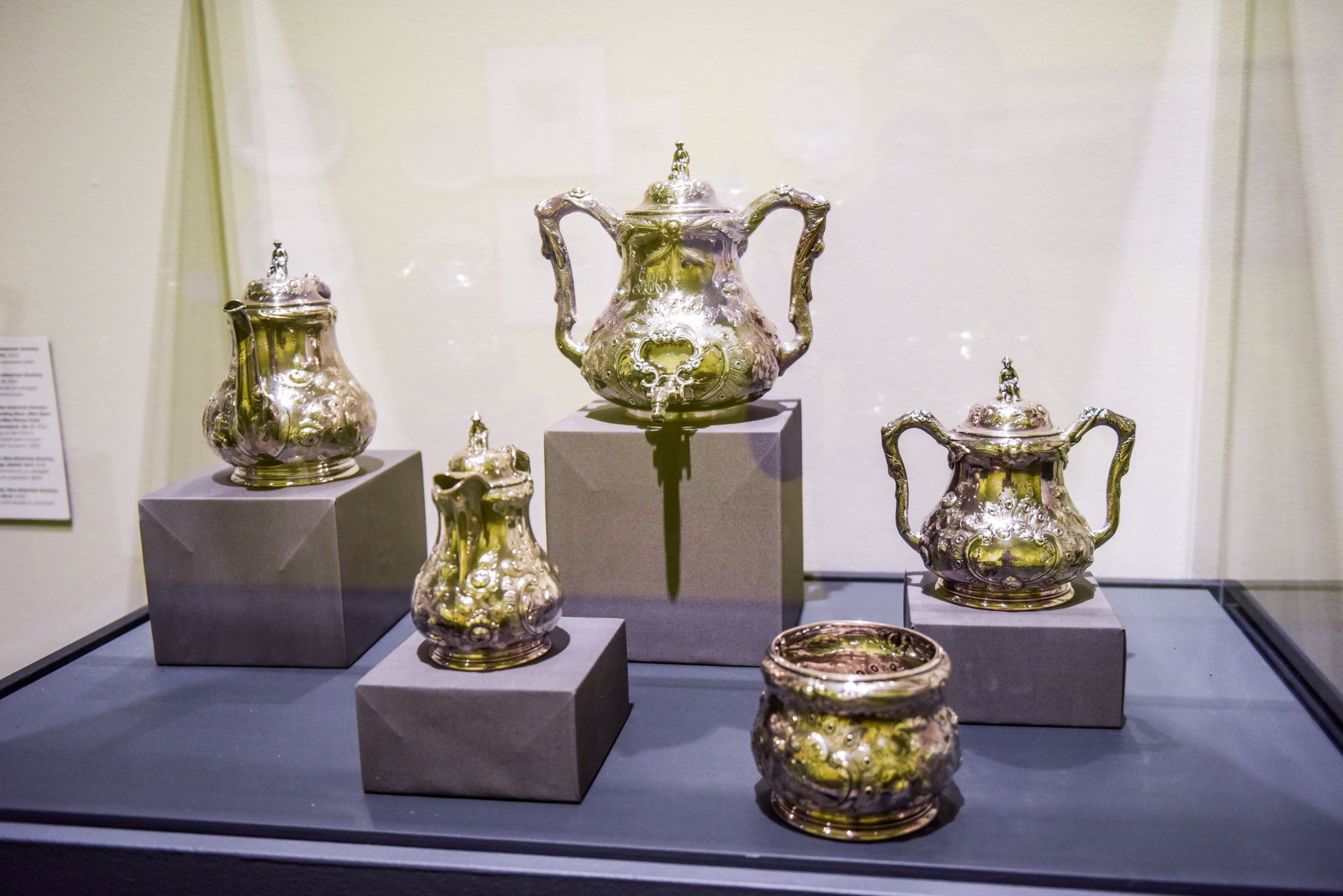
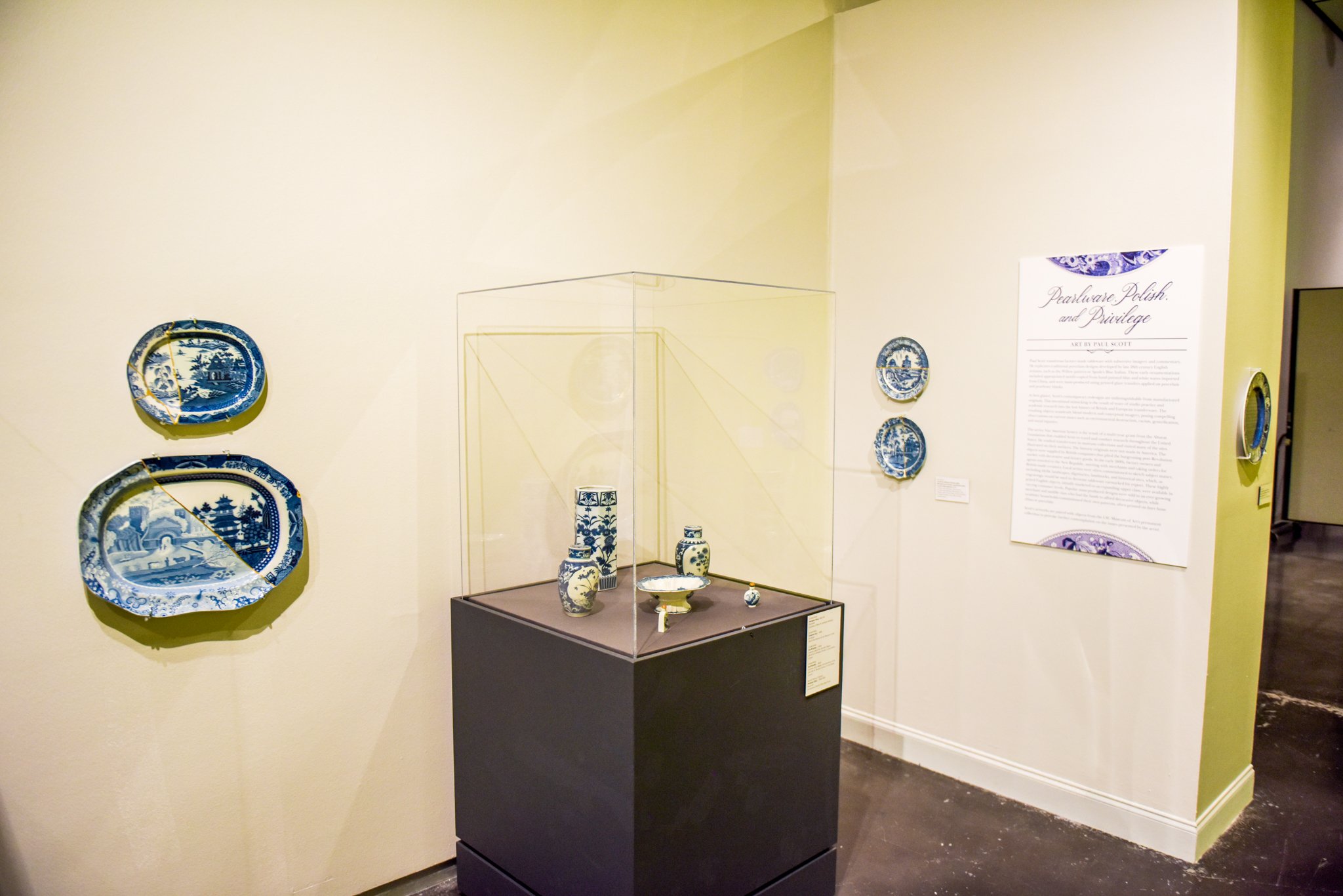
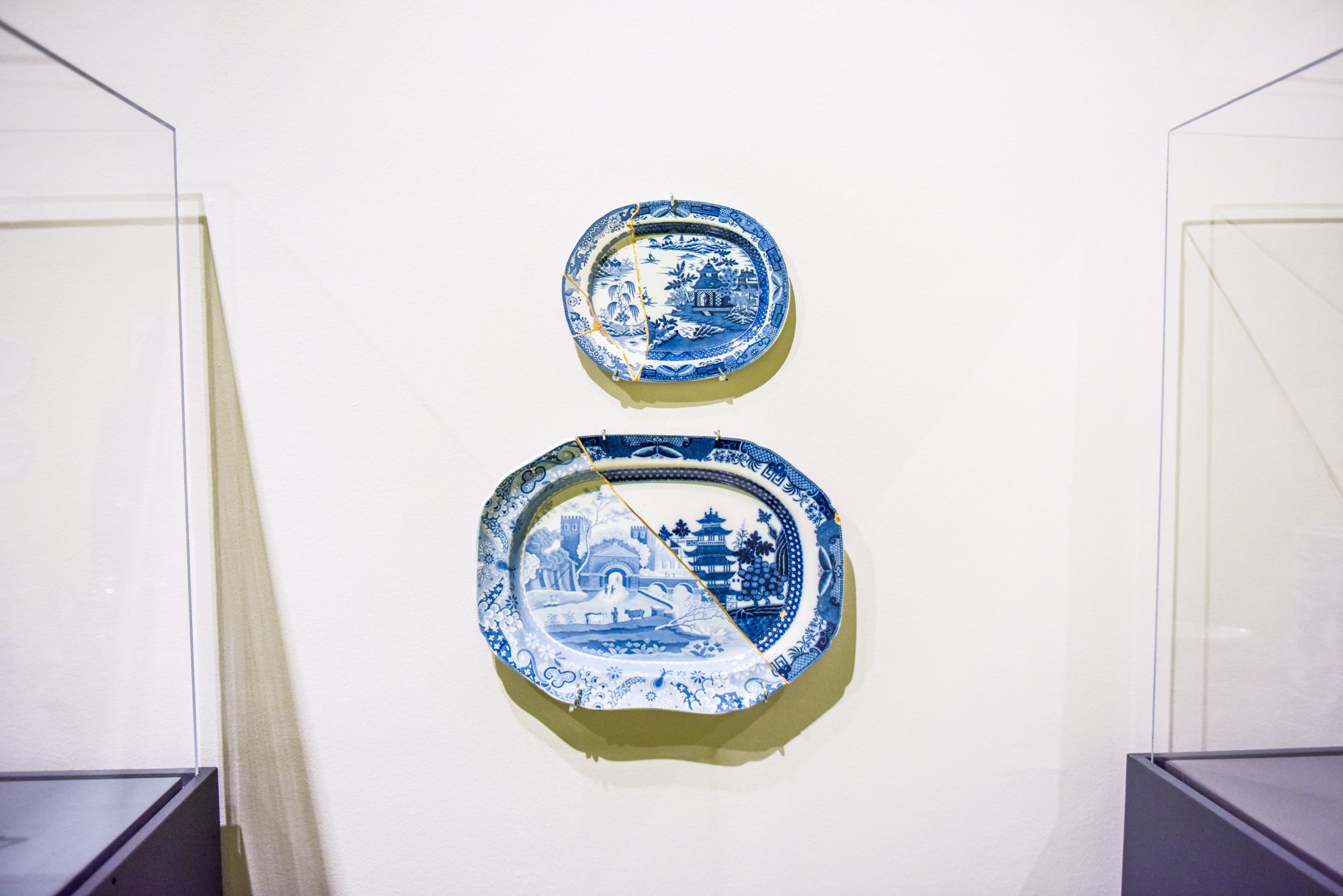
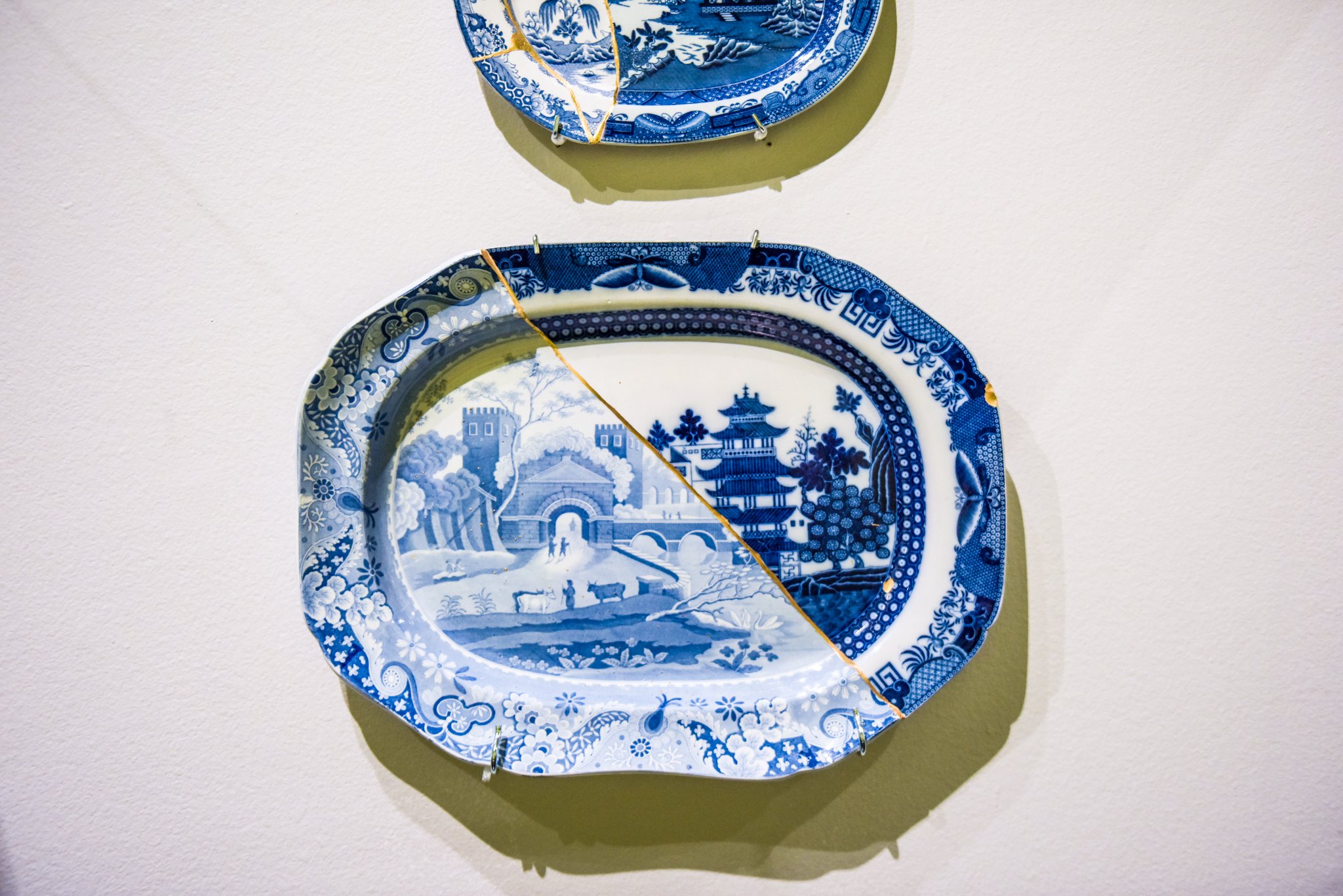
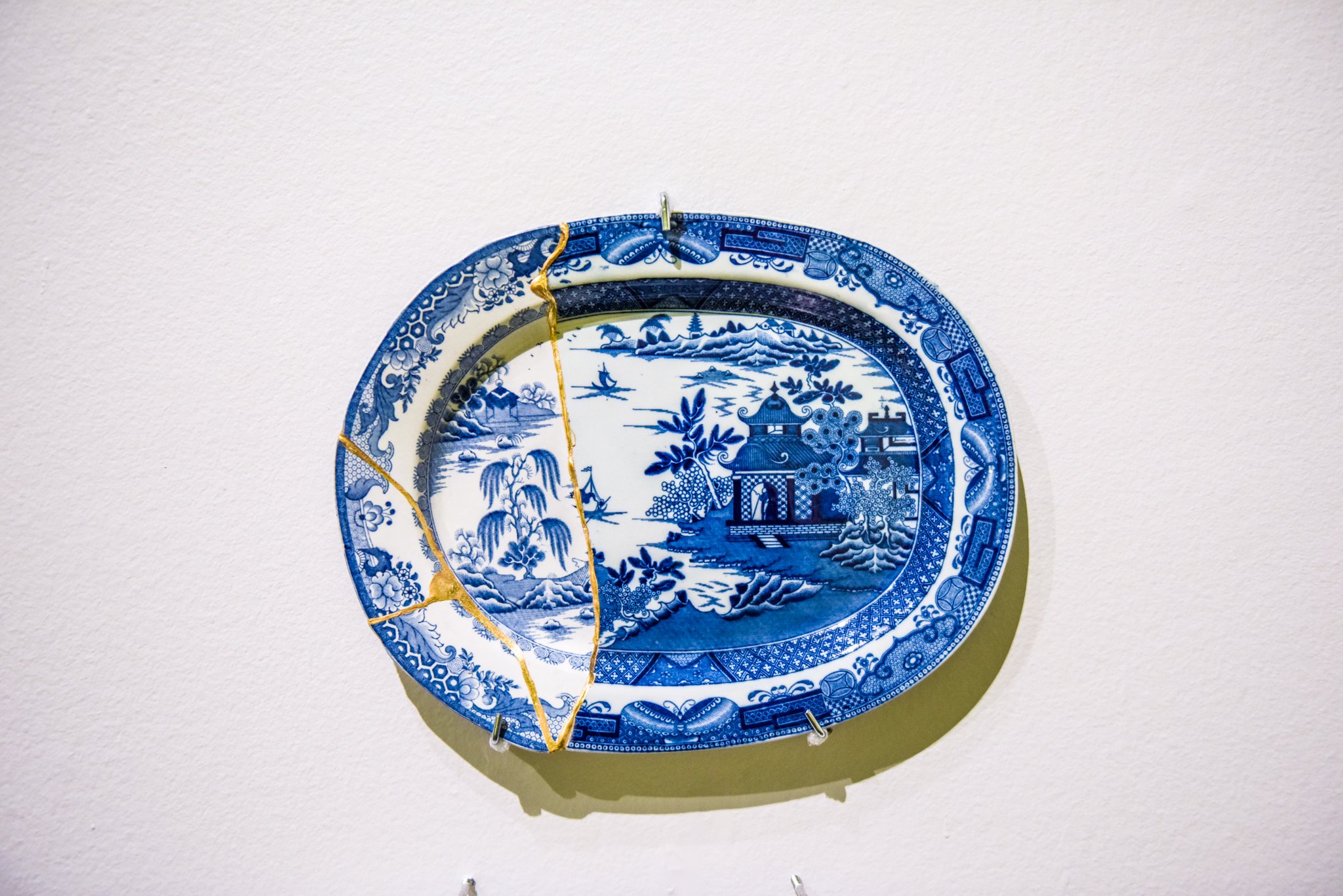
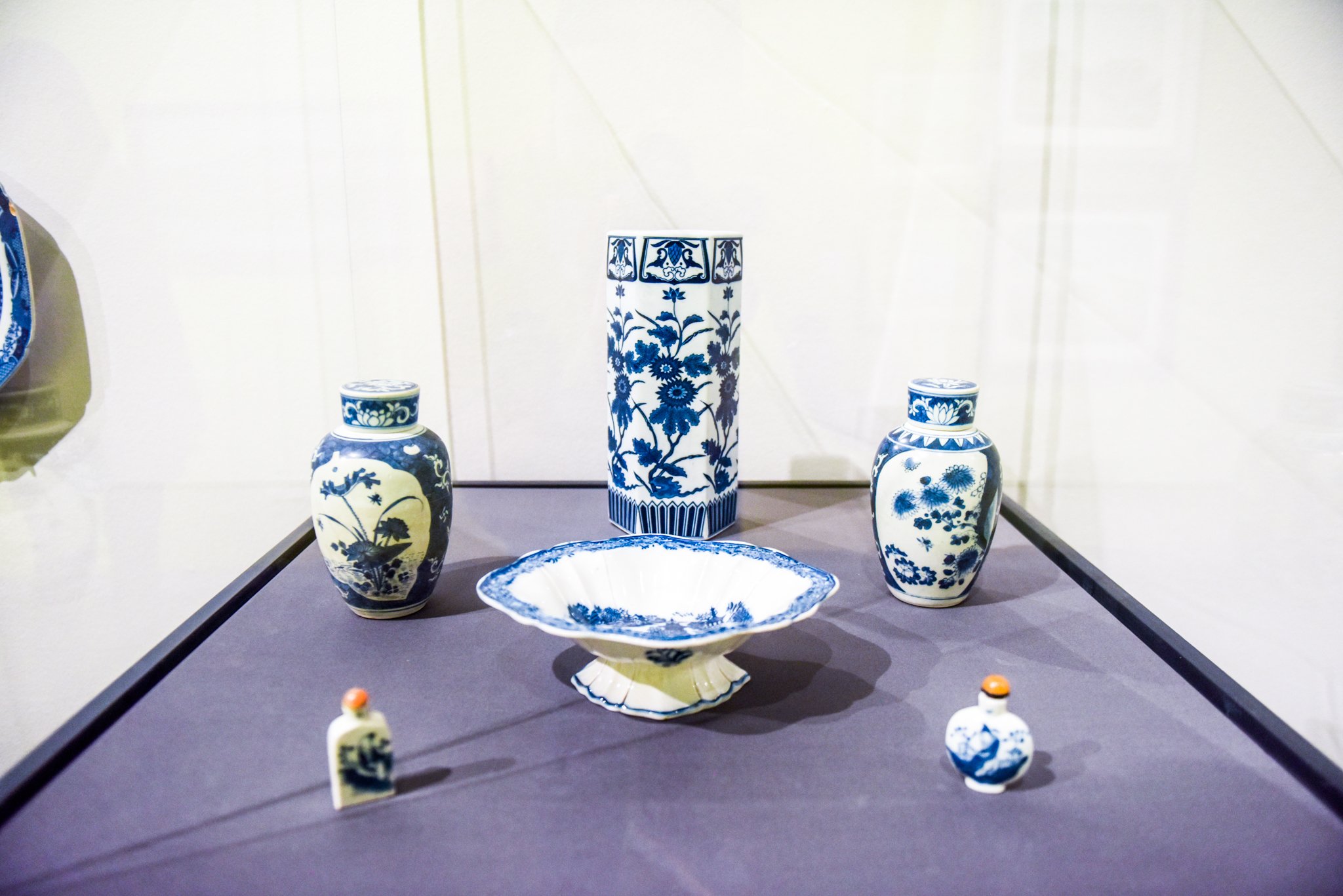
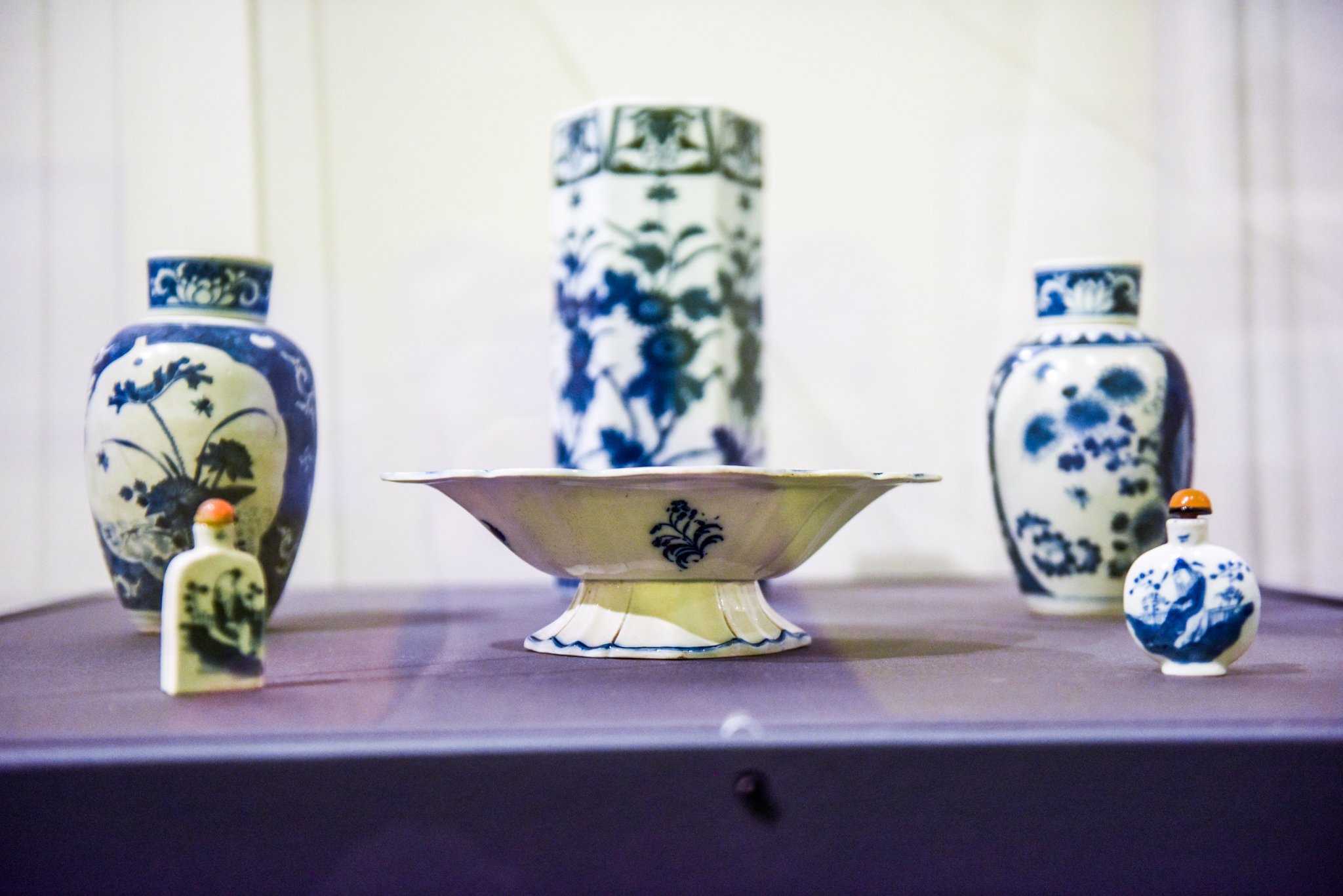
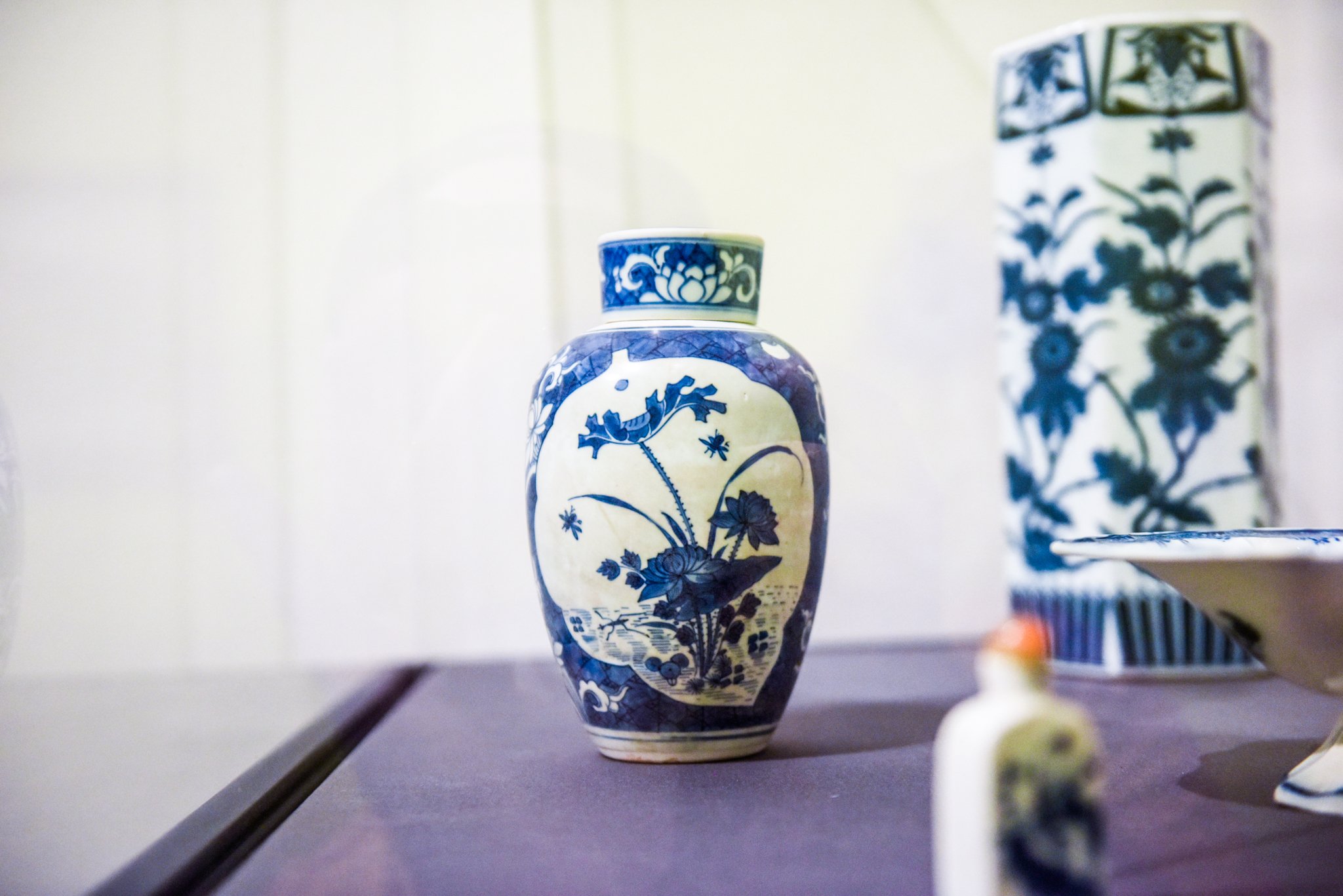
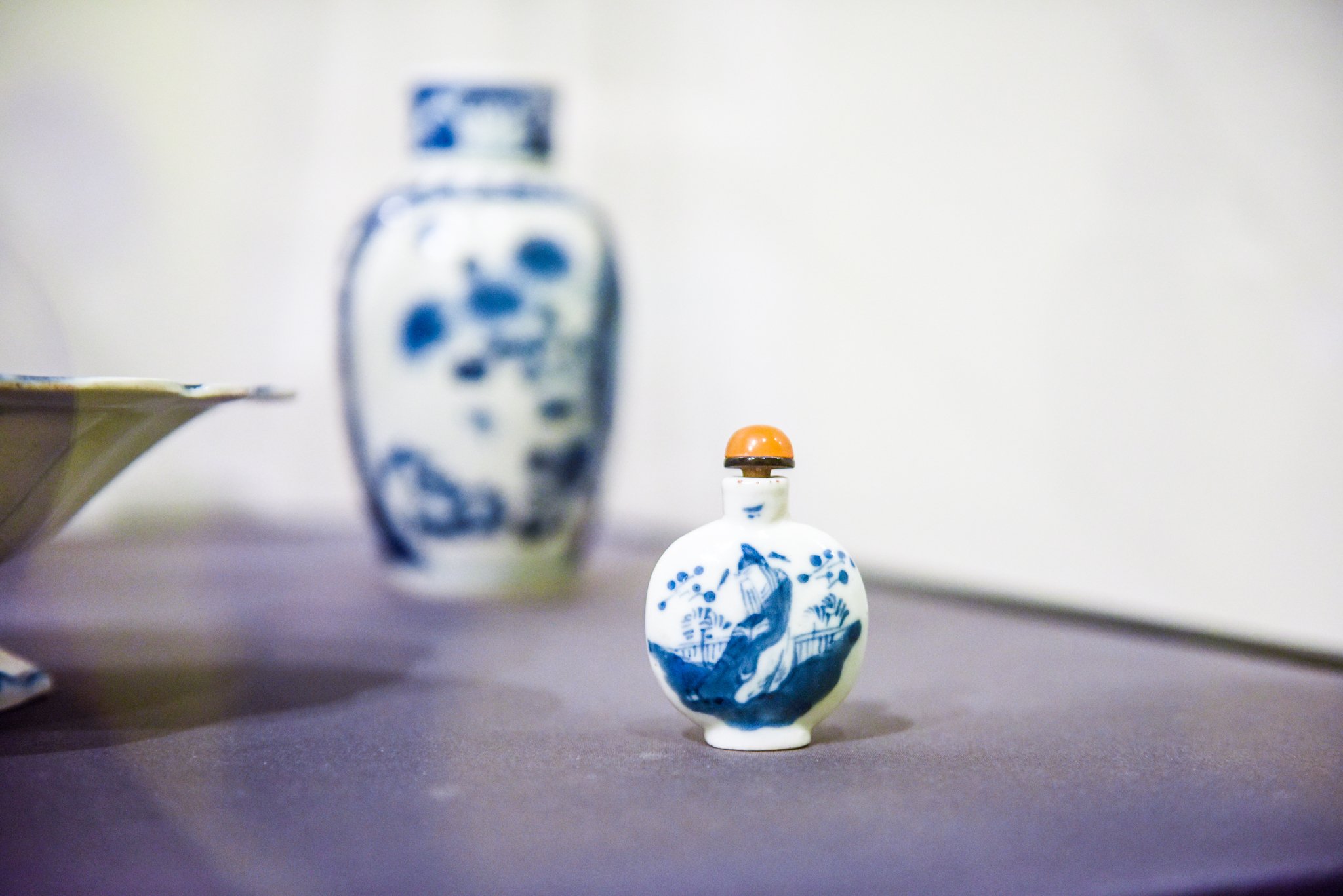
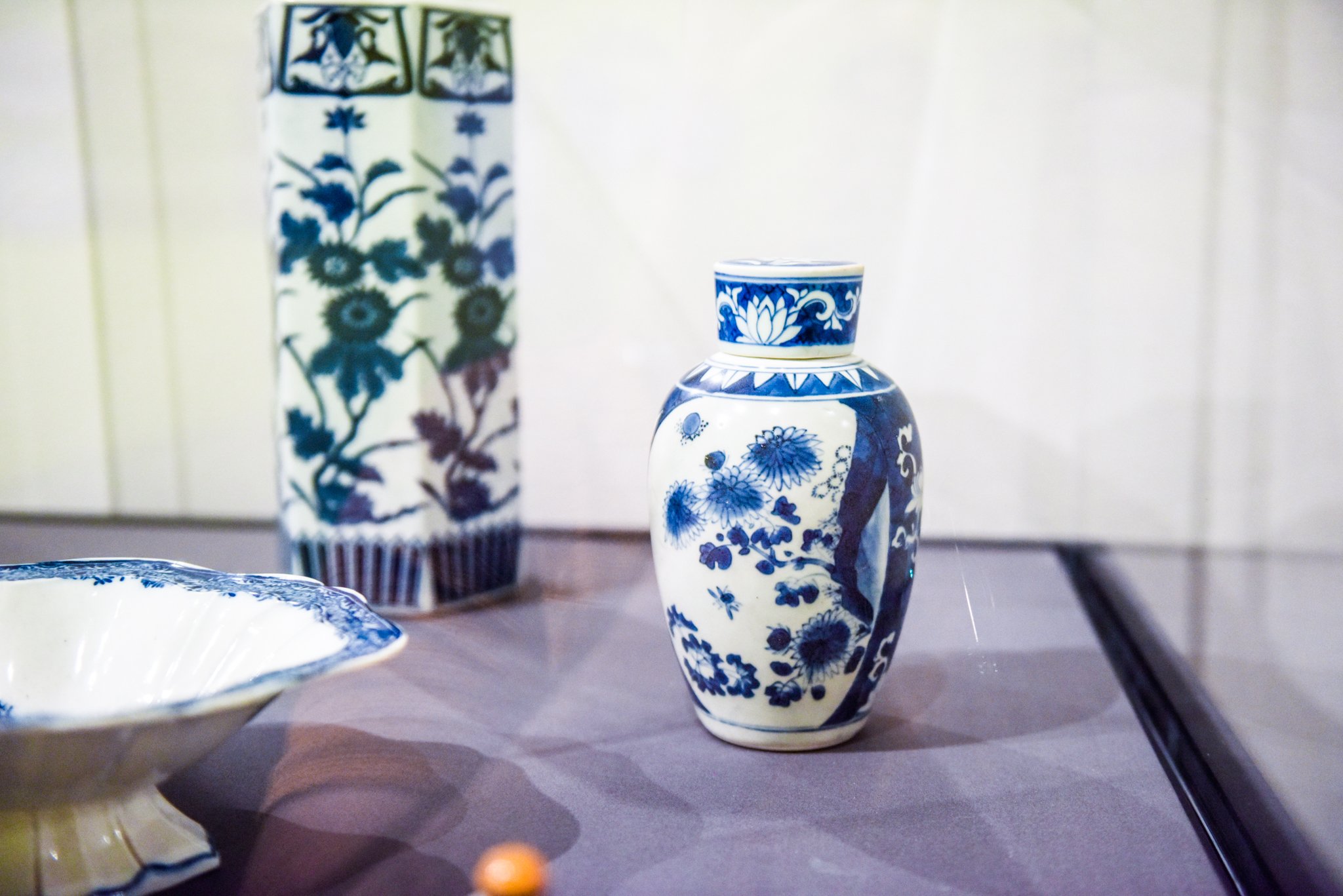
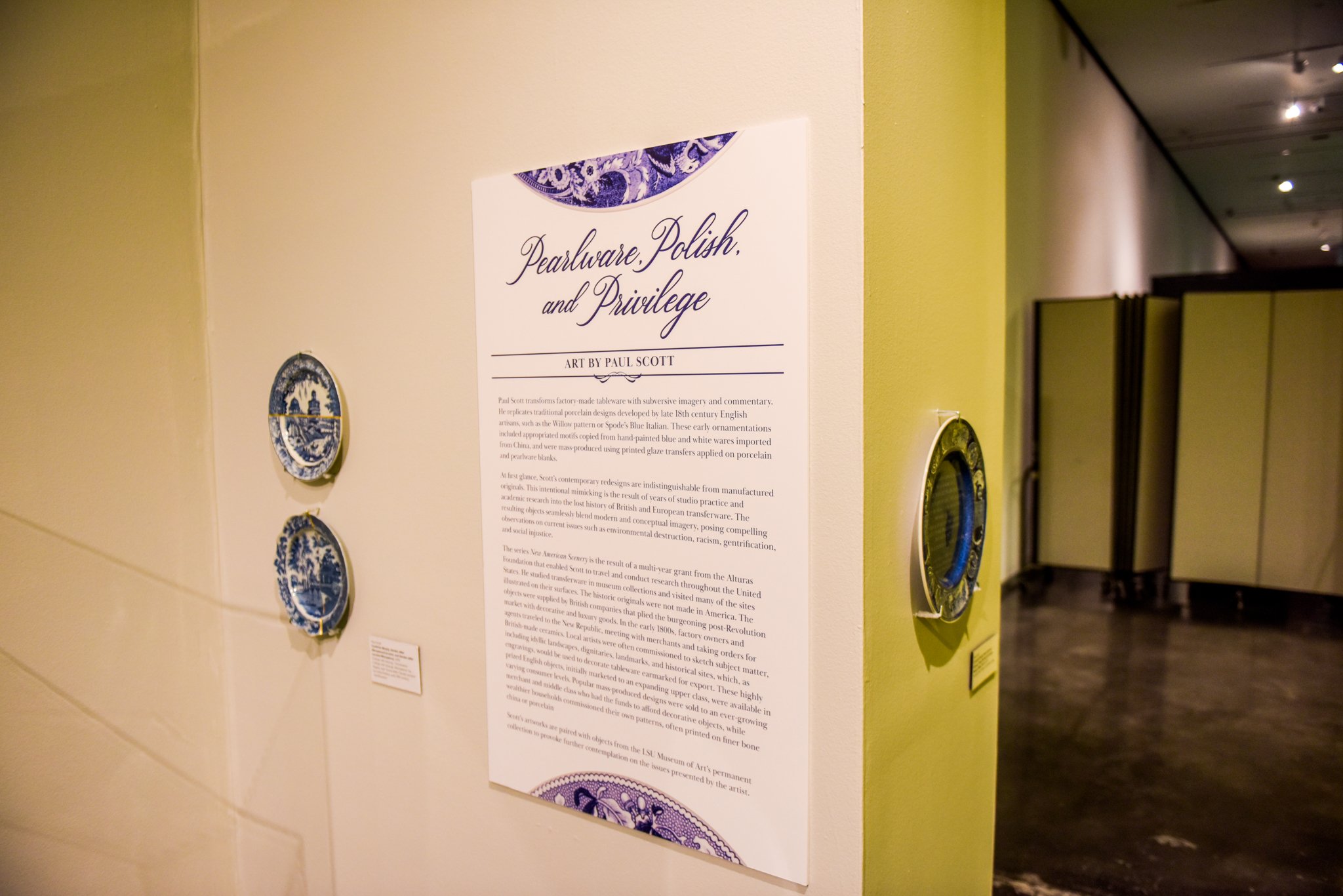
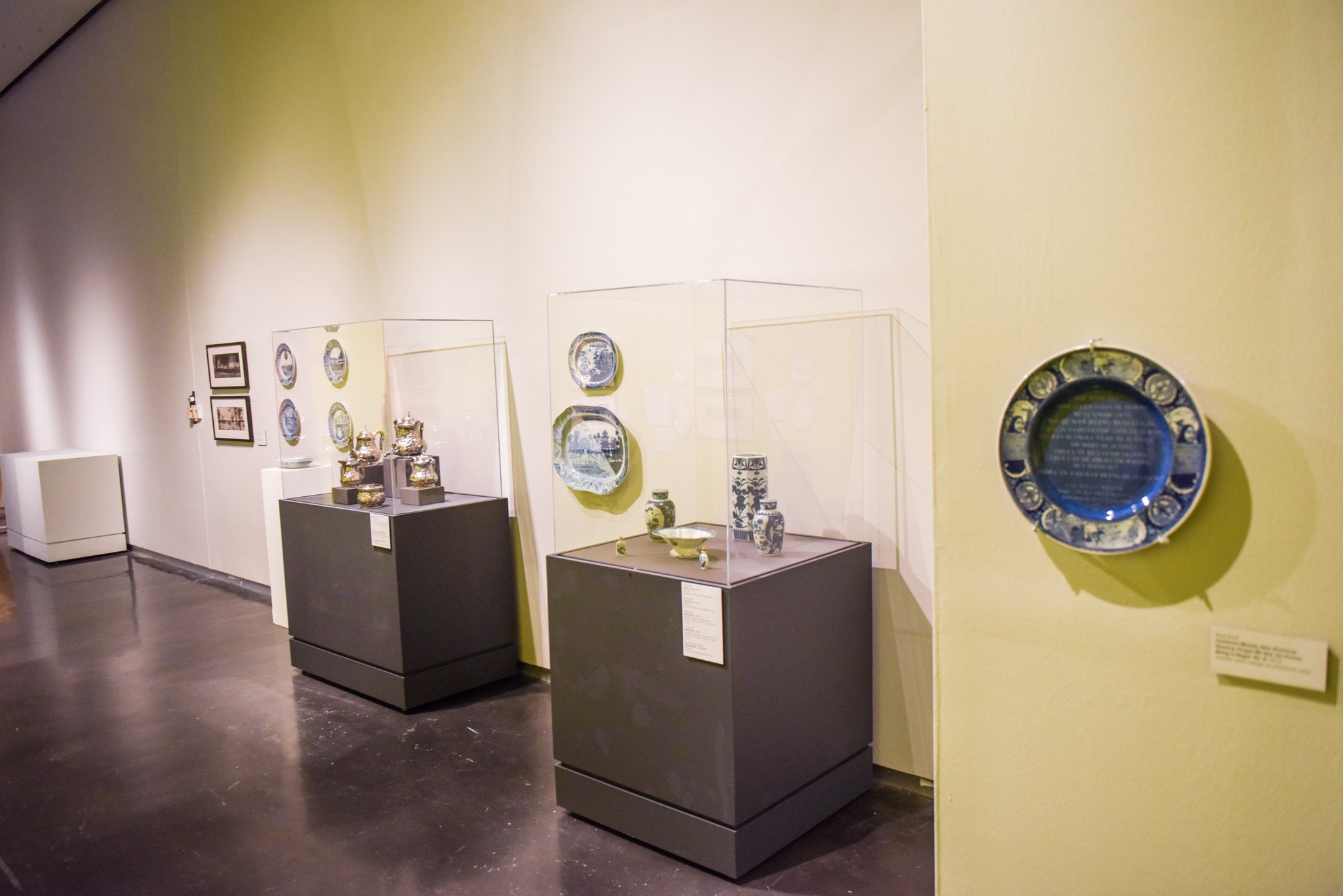
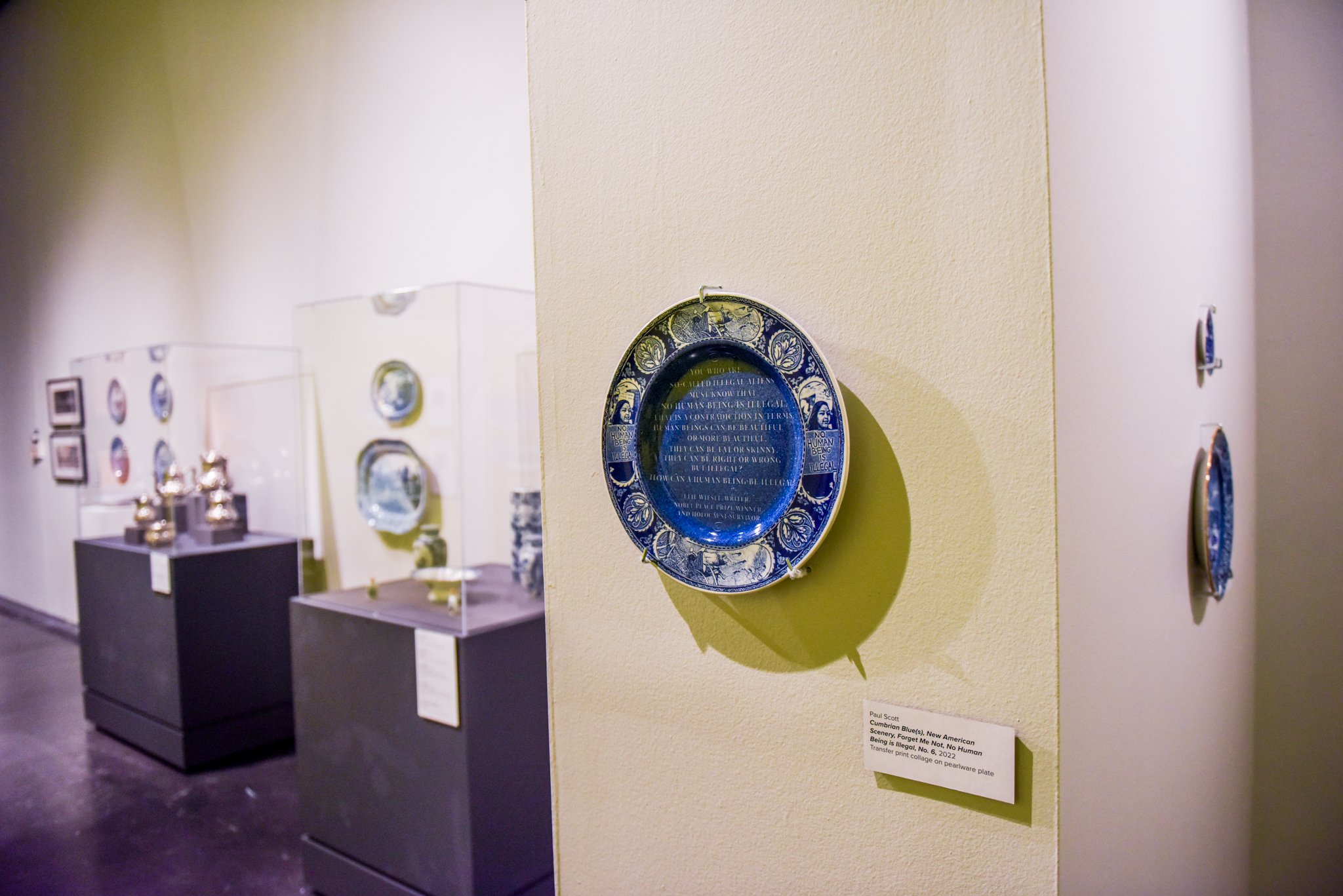

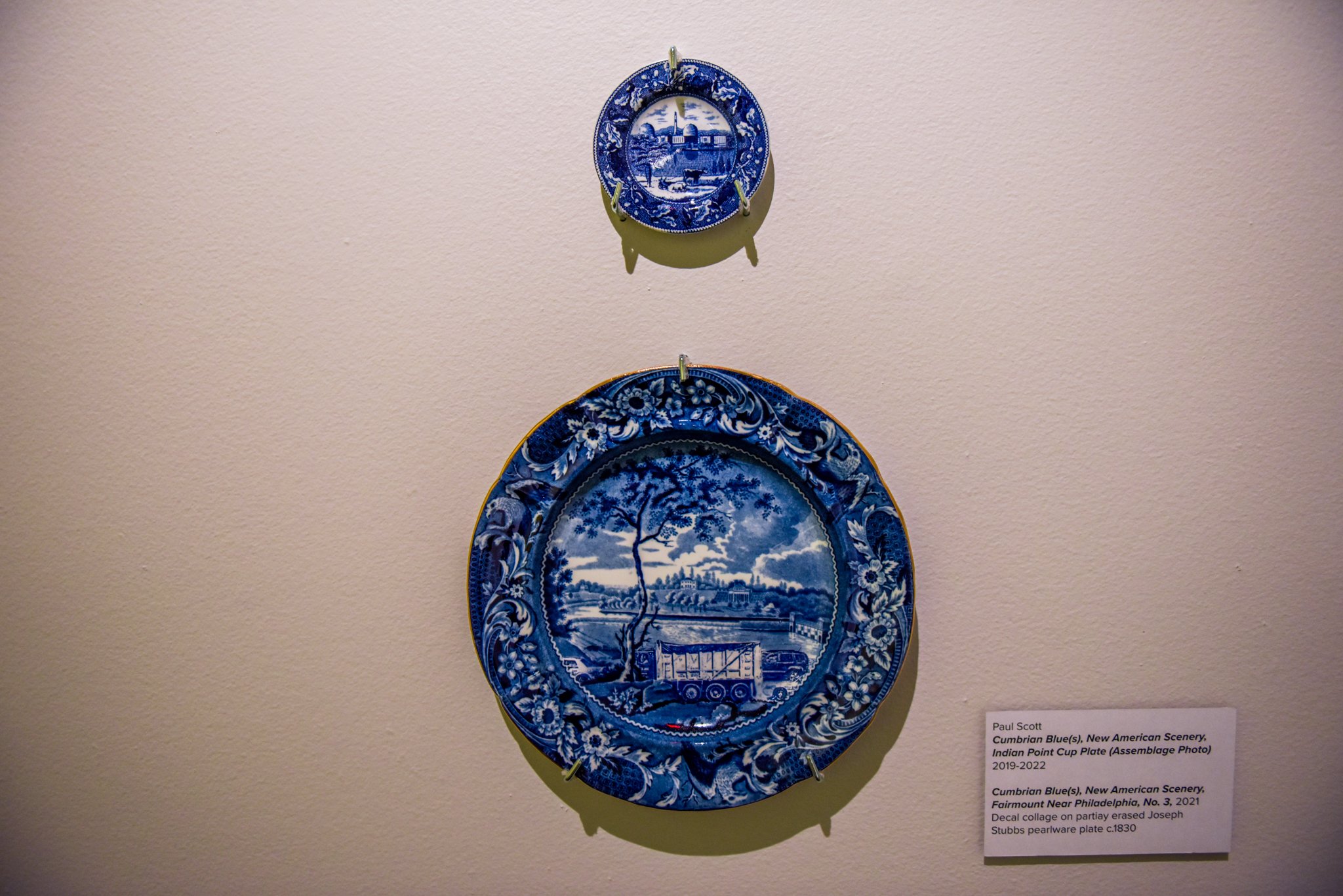
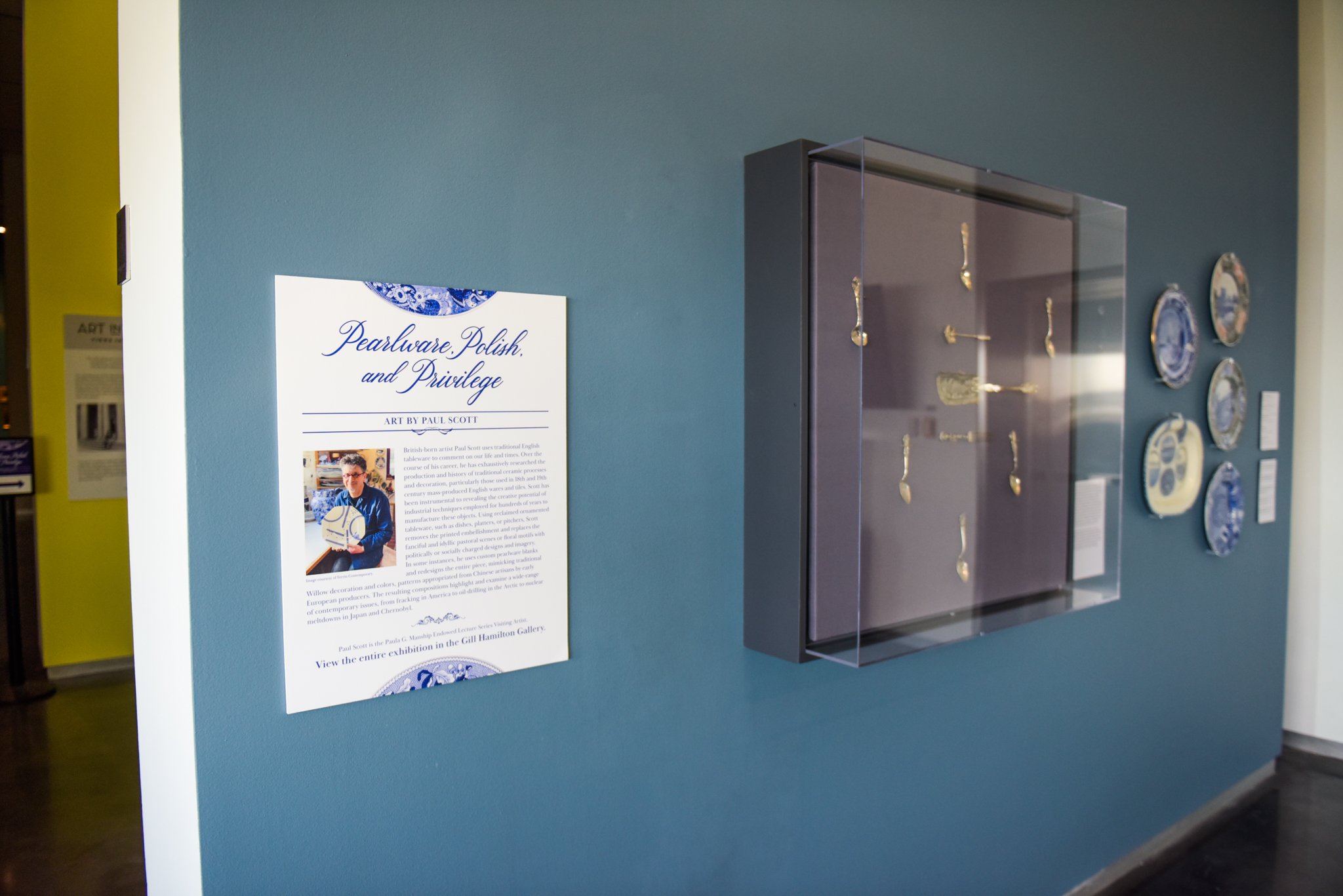
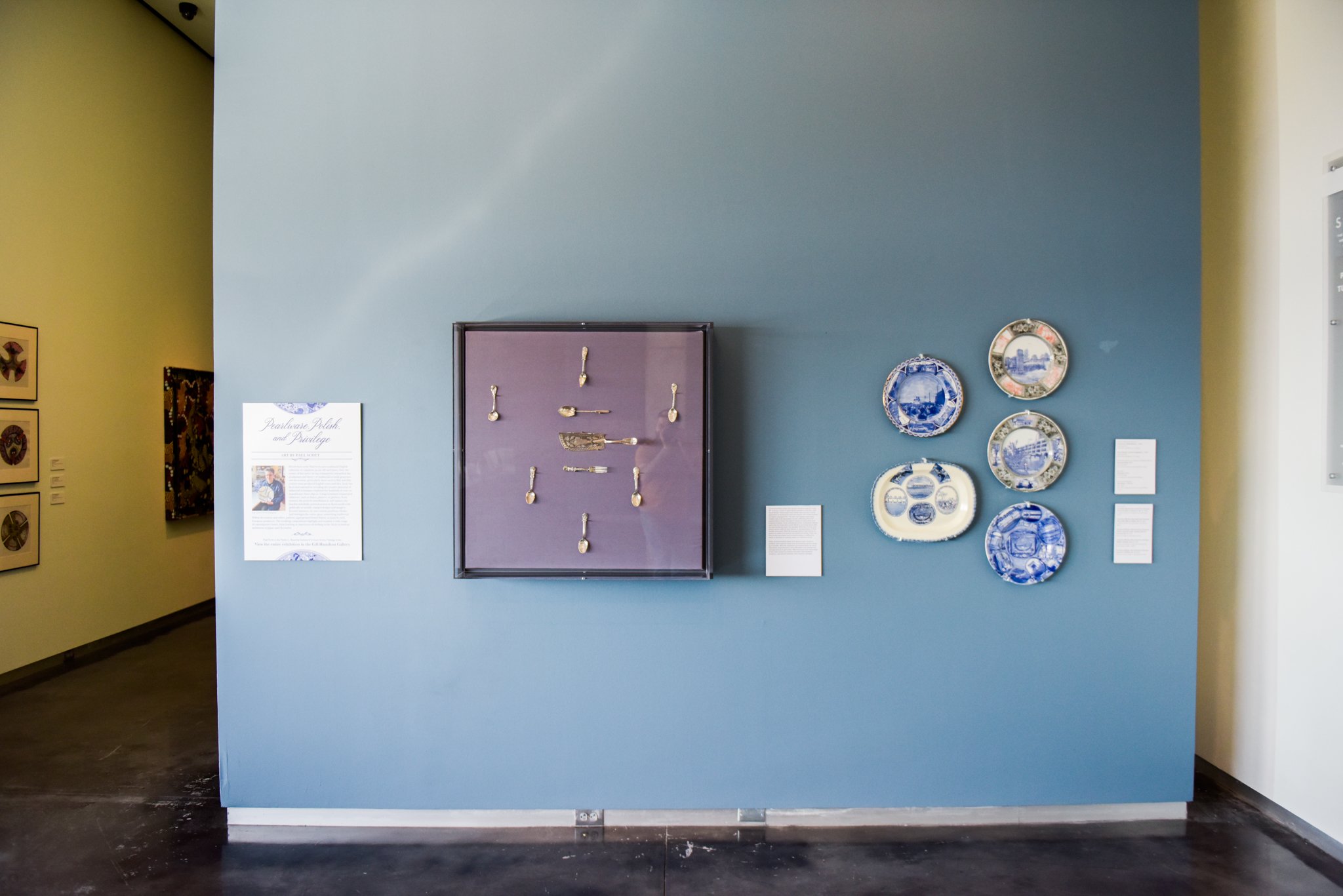

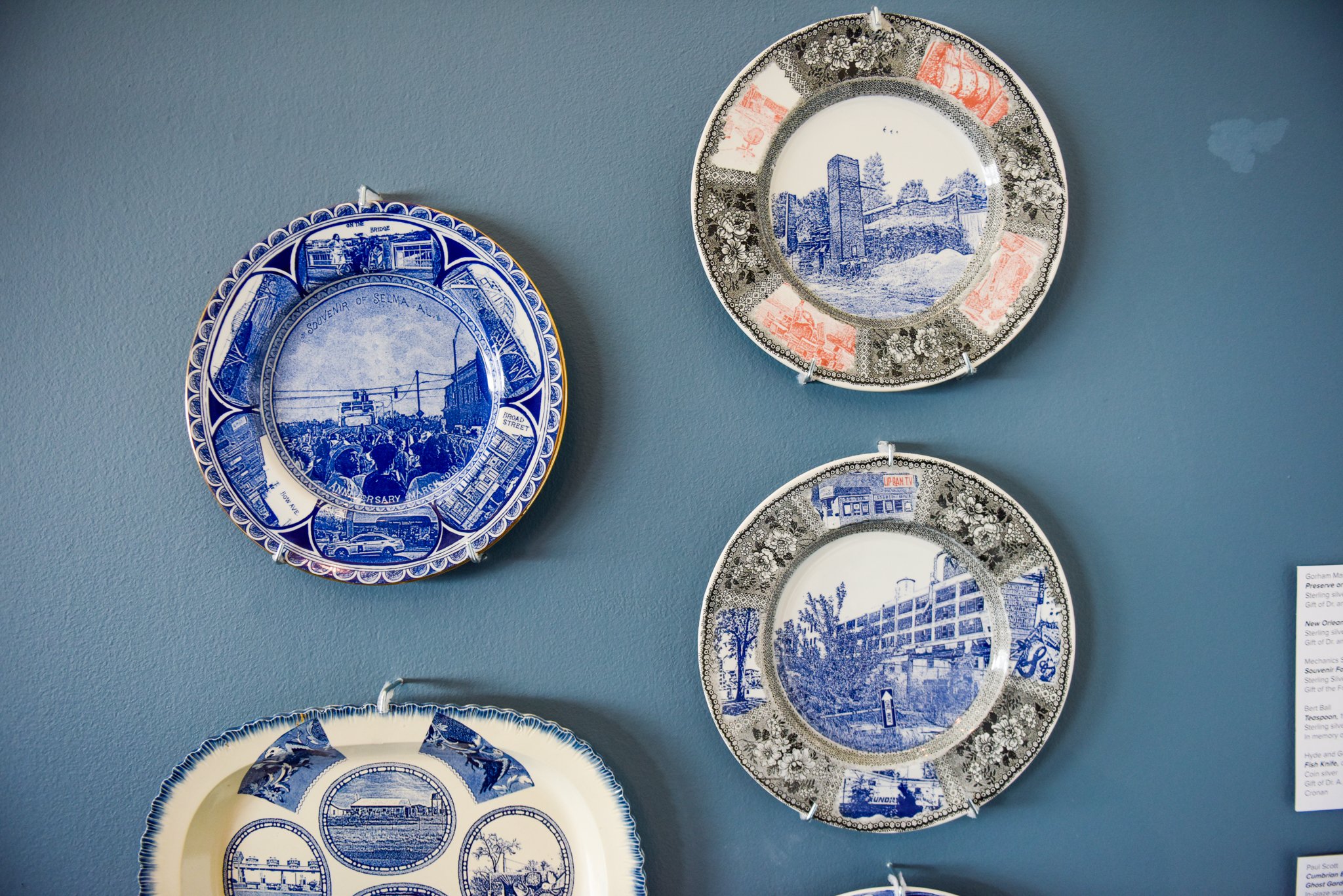
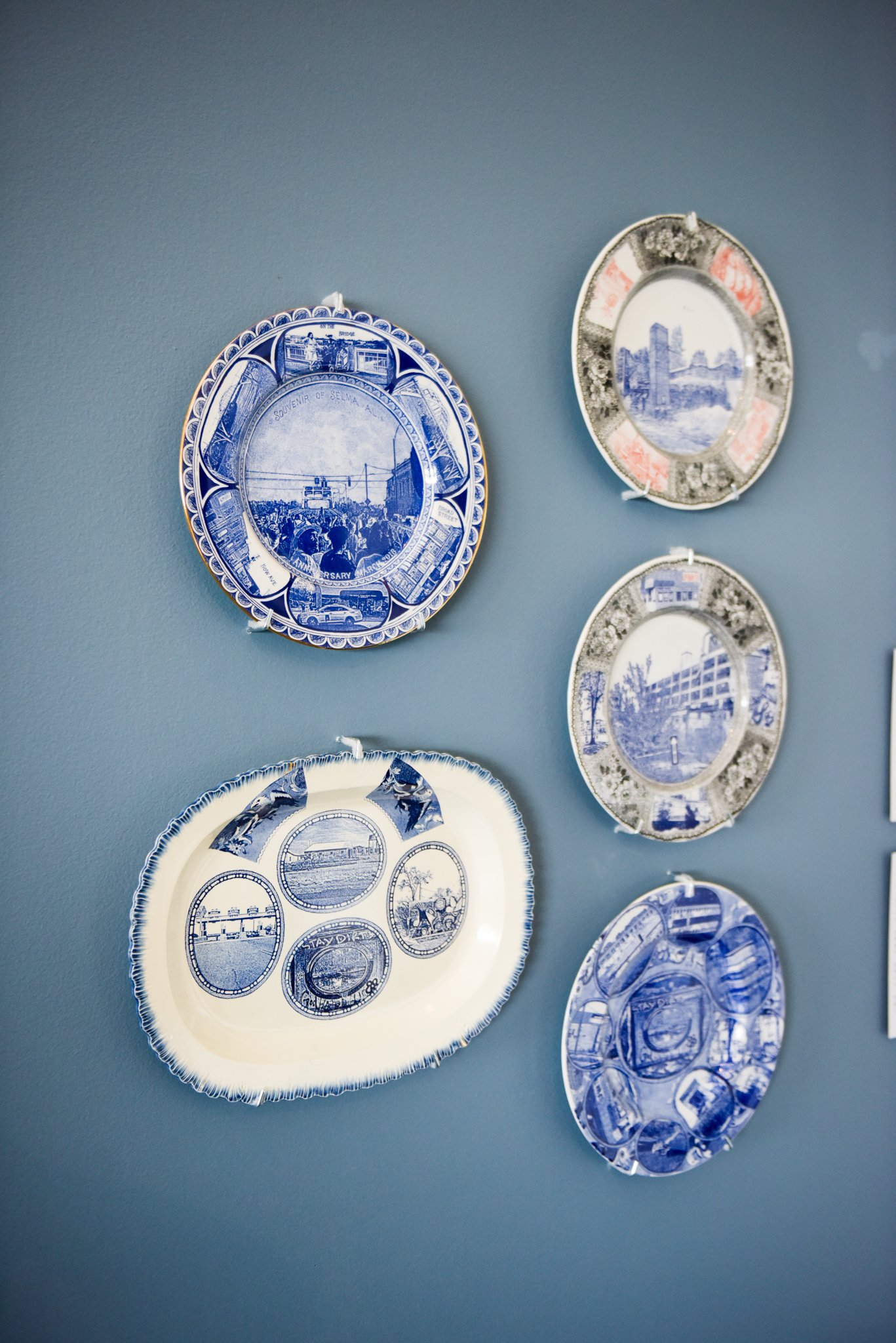
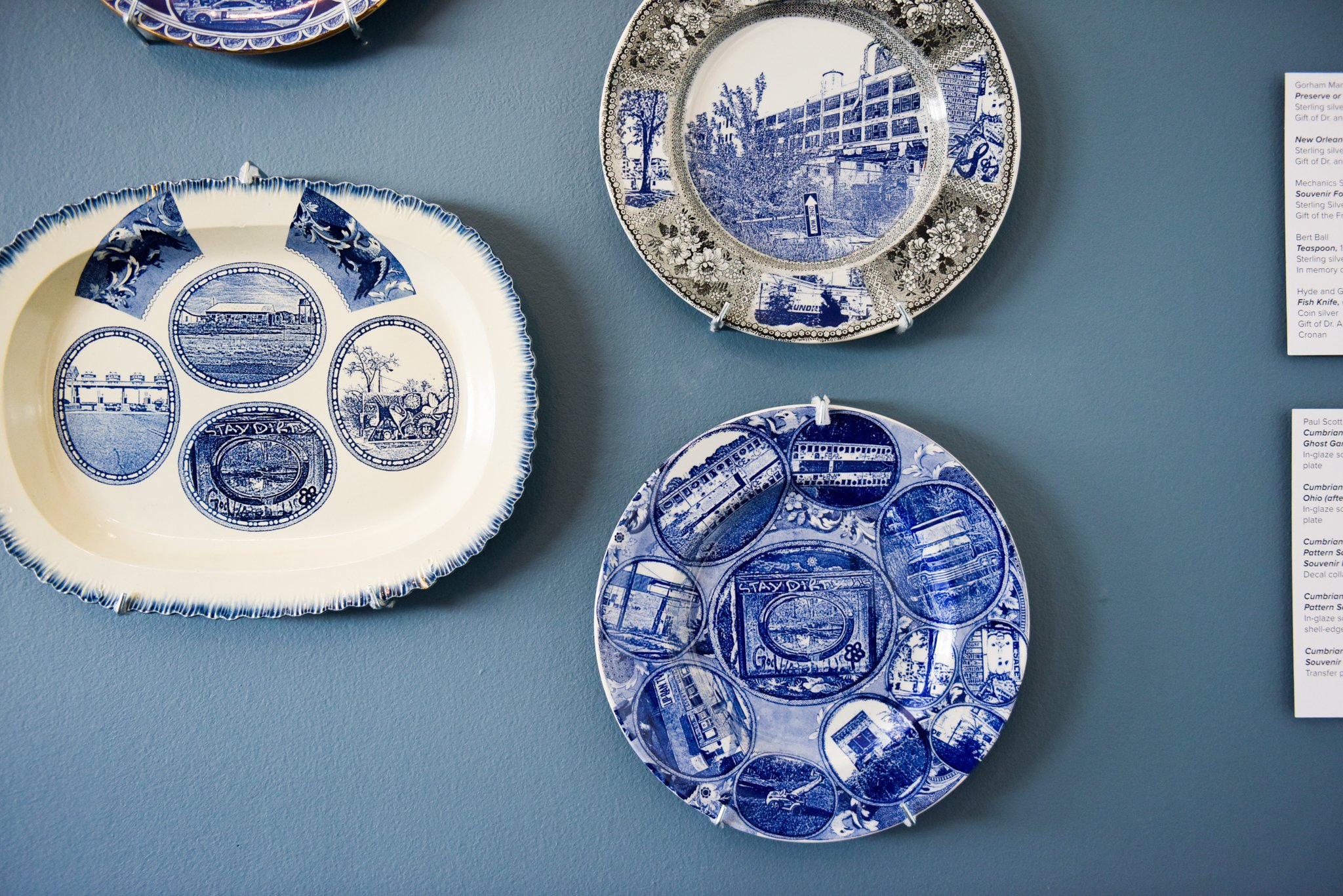
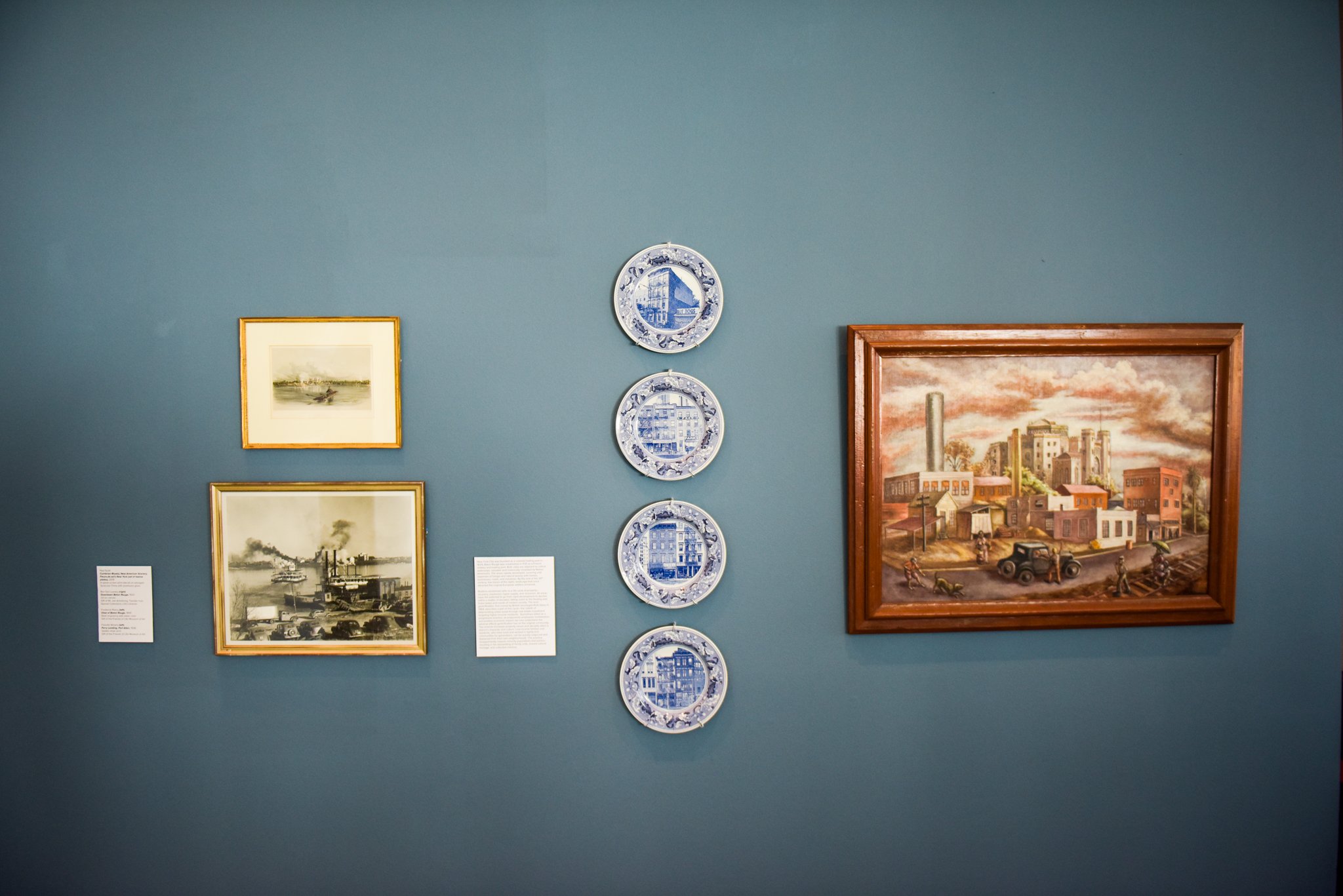
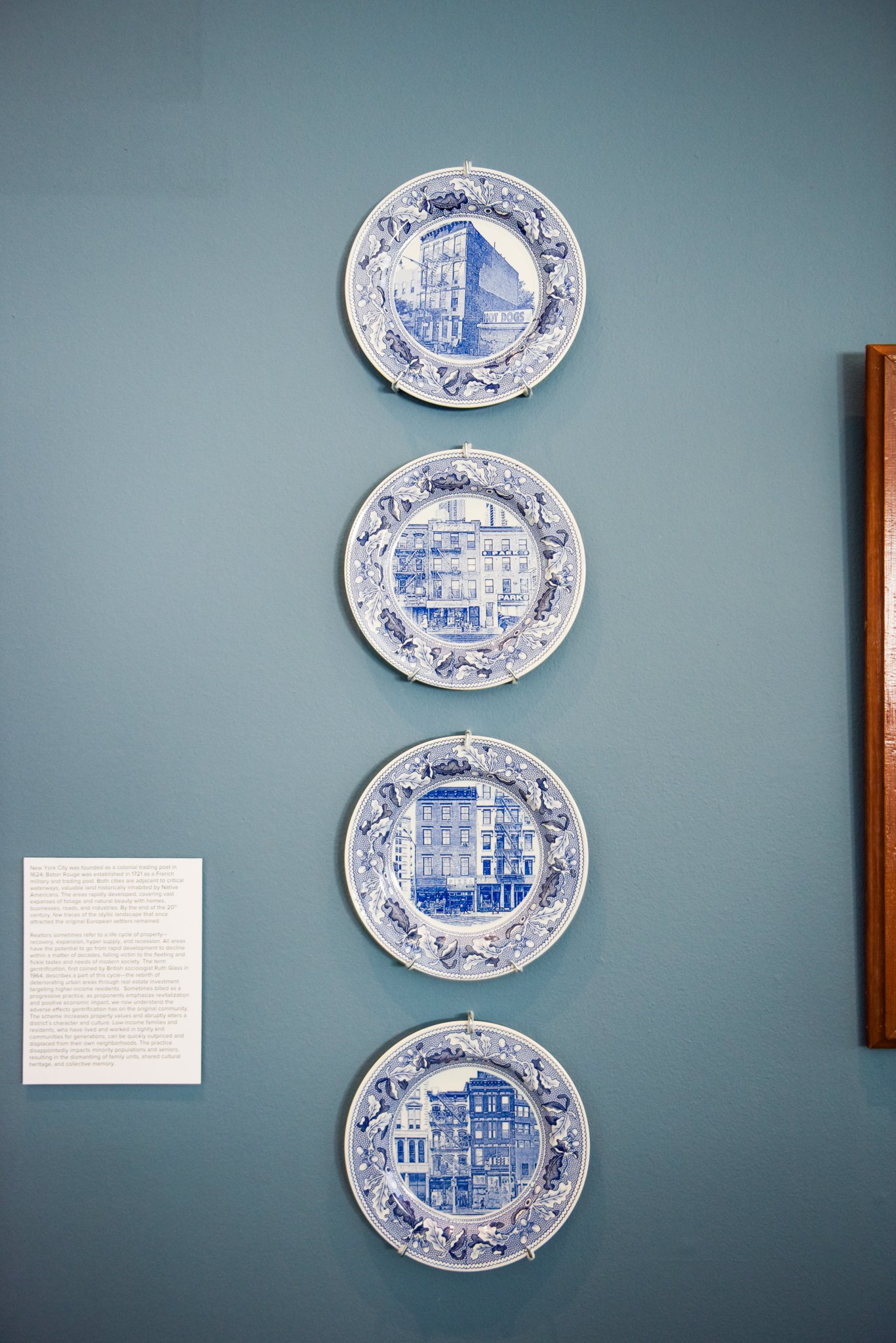
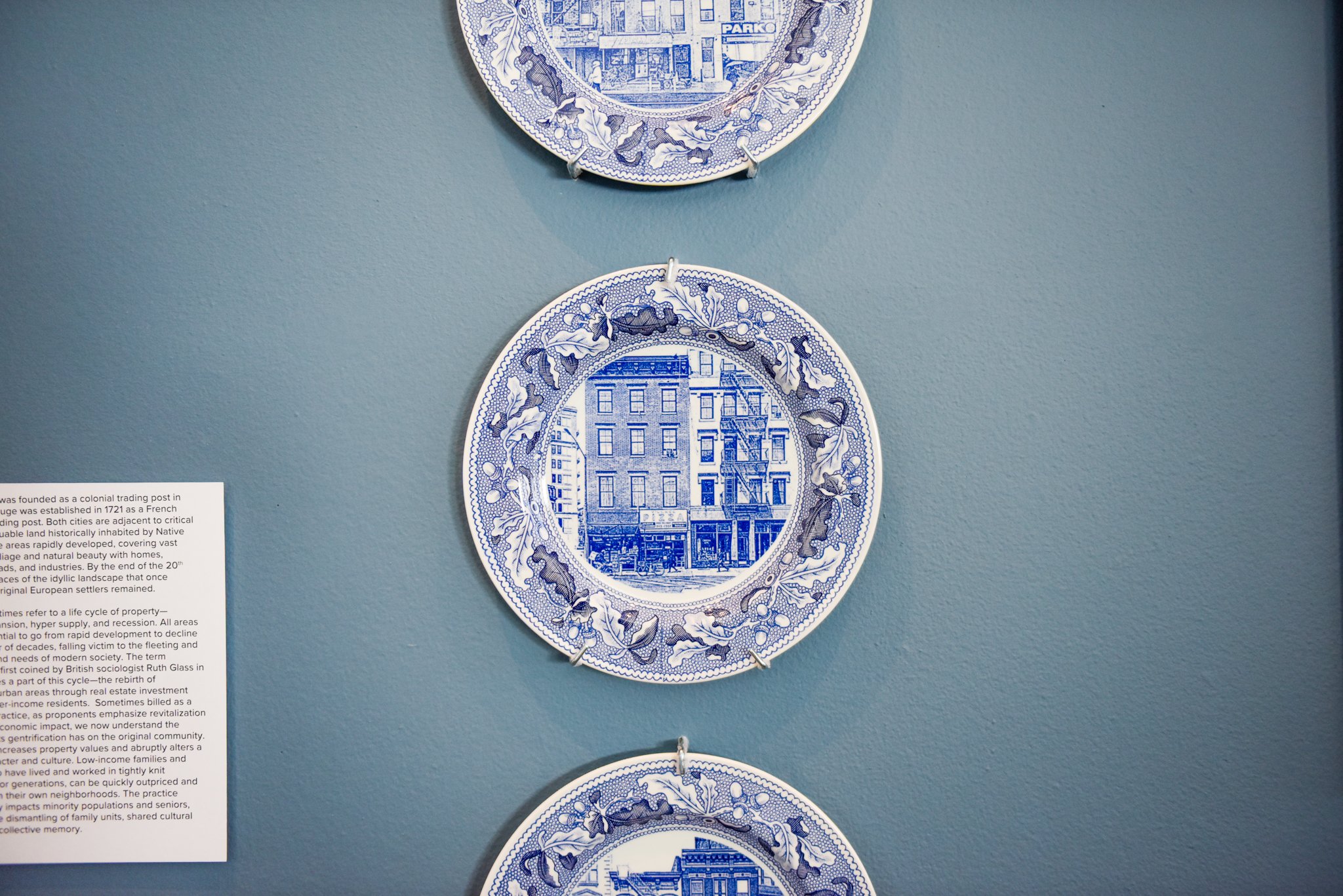
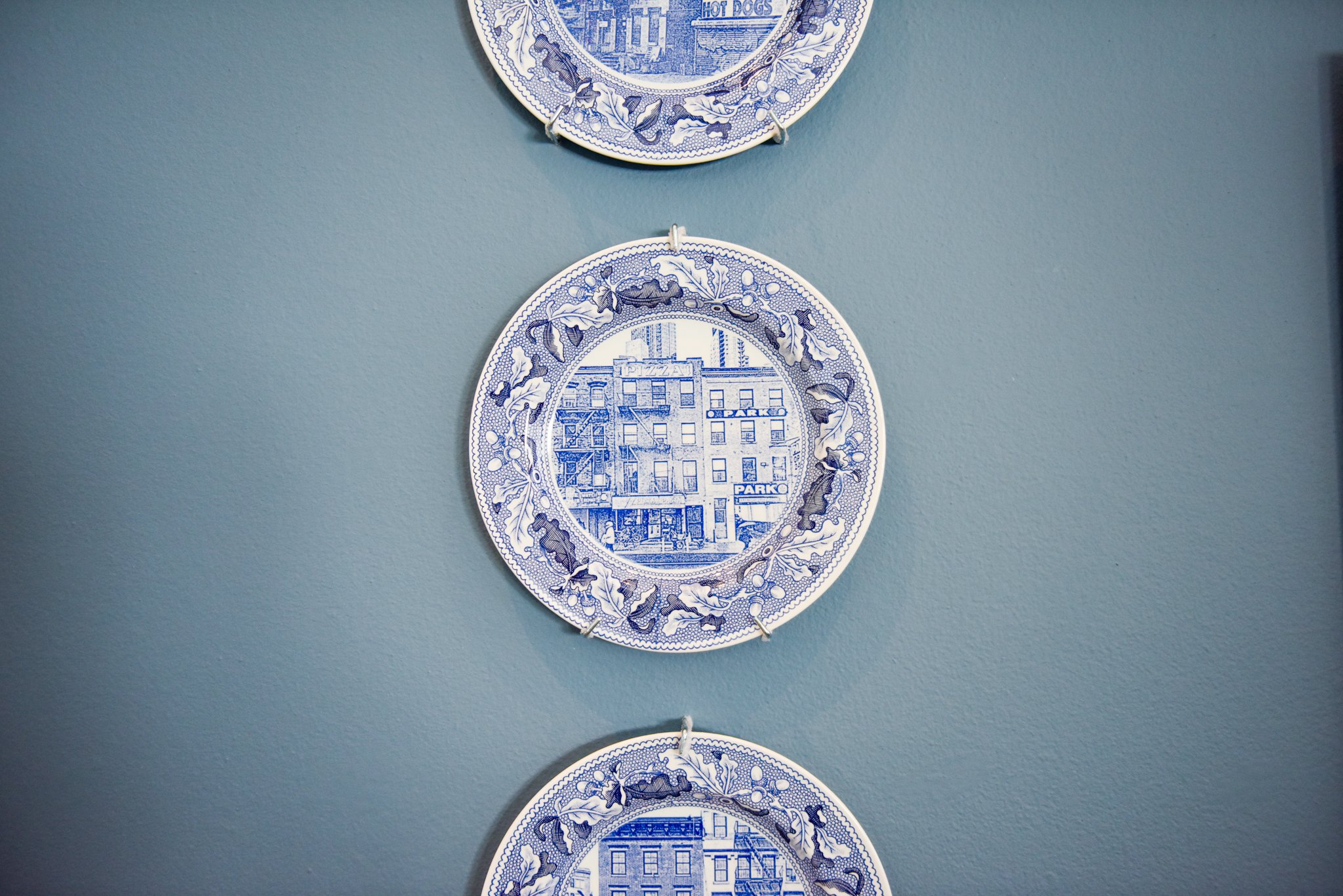
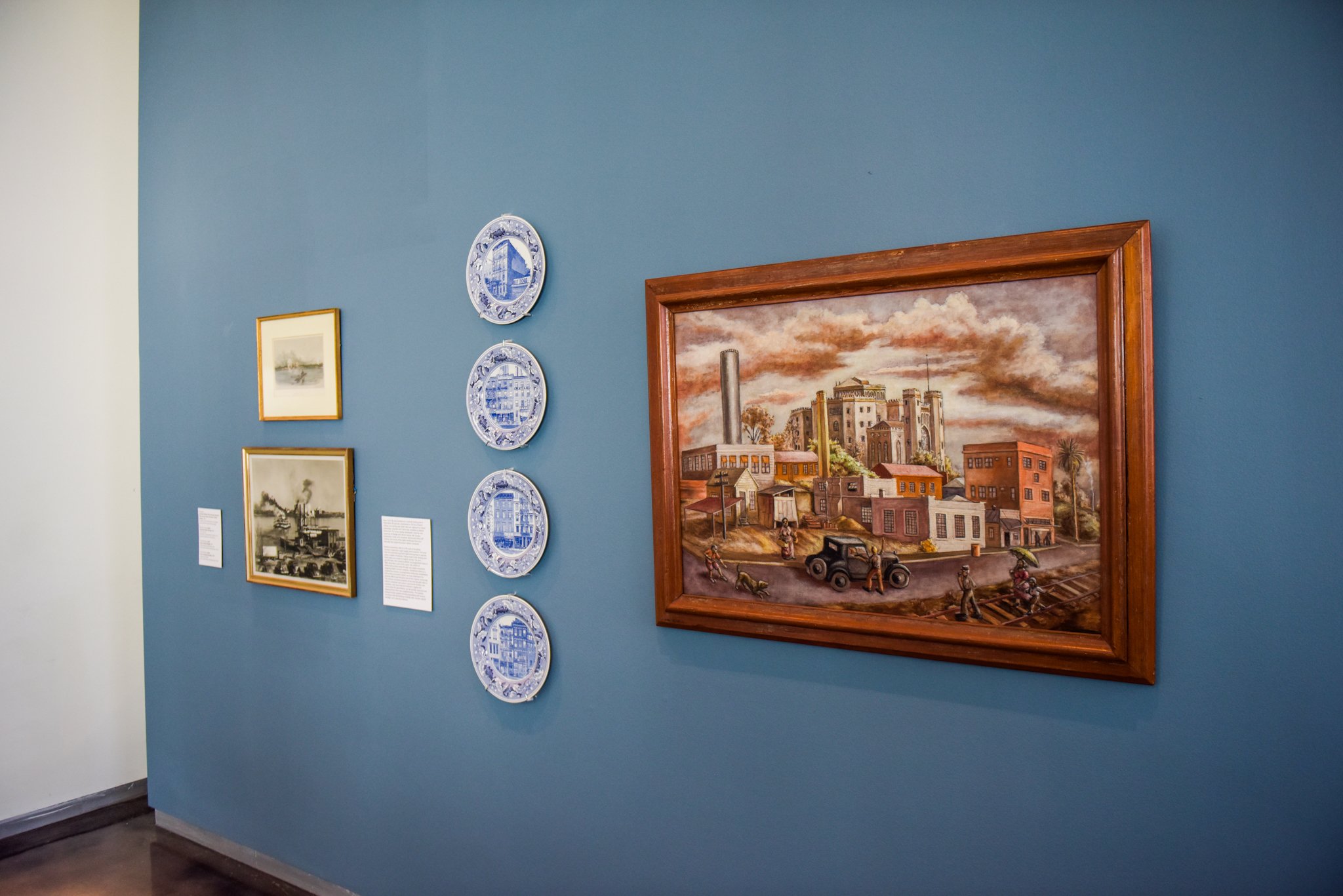
Exhibition Lenders & Sponsors
Paul Scott is the Paula G. Manship Endowed Lecture Series Visiting Artist. This exhibition is a collaboration between the LSU College of Art + Design, the LSU School of Art, and the LSU Museum of Art.
Support for this exhibition and all LSU MOA exhibitions is provided by the generous donors to the Annual Exhibition Fund: Louisiana CAT; The Imo N. Brown Memorial Fund in memory of Heidel Brown and Mary Ann Brown; The Alma Lee, H.N. and Cary Saurage Fund; Charles "Chuck" Edward Schwing; Robert and Linda Bowsher; Becky and Warren Gottsegen; LSU College of Art + Design; Mr. and Mrs. Sanford A. Arst; and The Newton B. Thomas Family/Newtron Group Fund.







Pearlware, Polish, and Privilege: Art by Paul Scott will be on view at the LSU Museum of Art in Baton Rouge, Louisiana from October 27, 2022–February 26, 2023. Learn more in this press release.